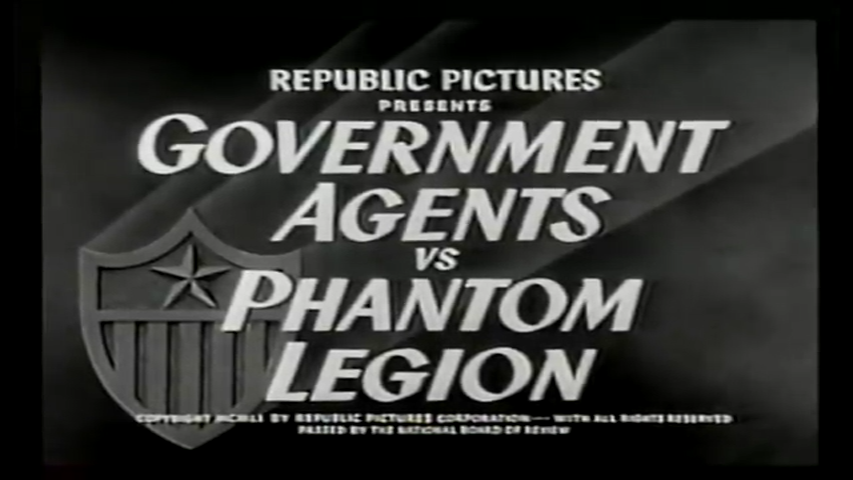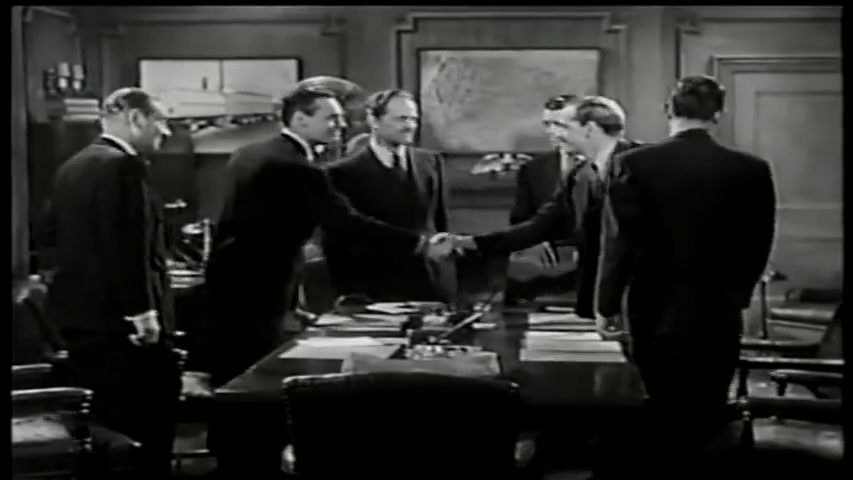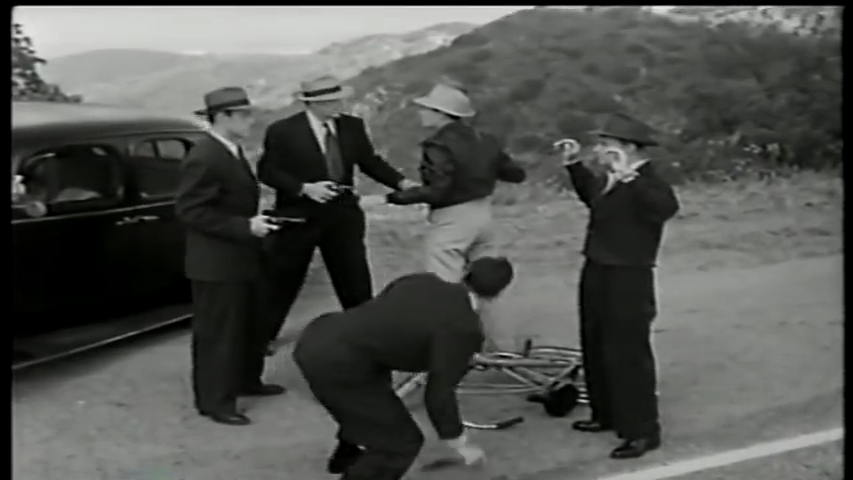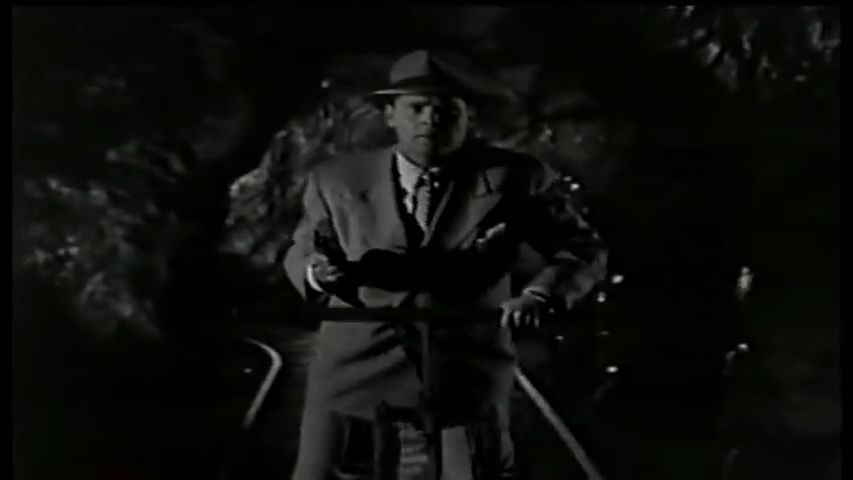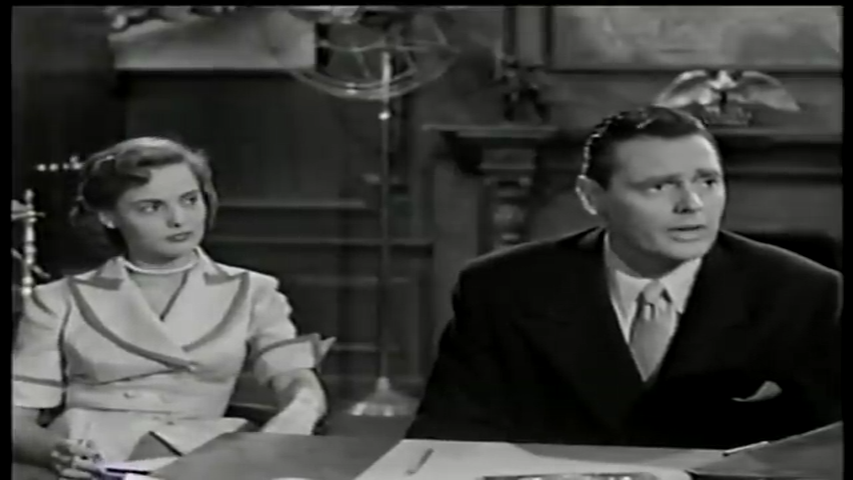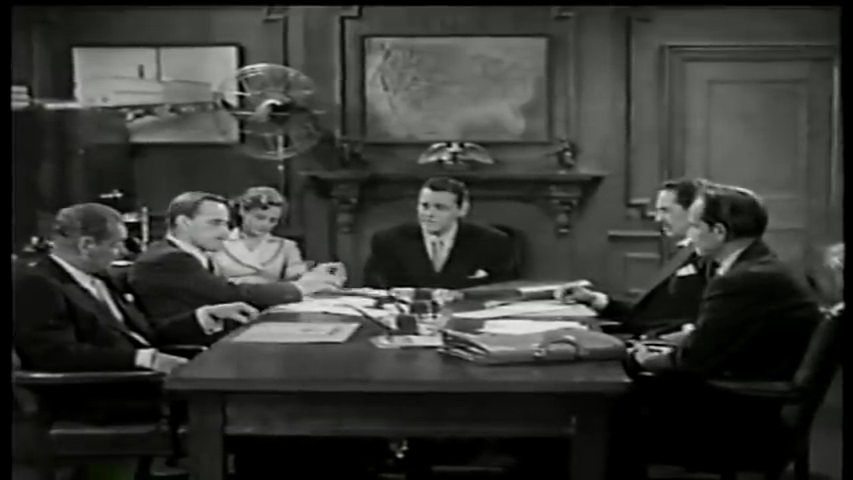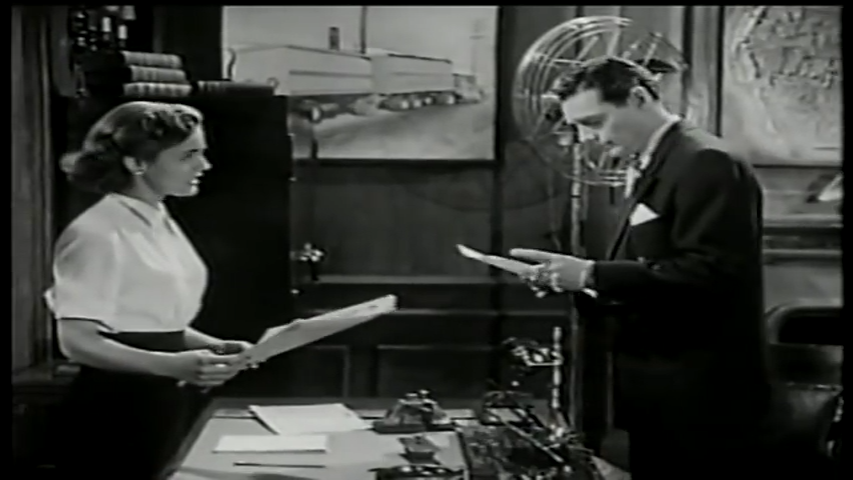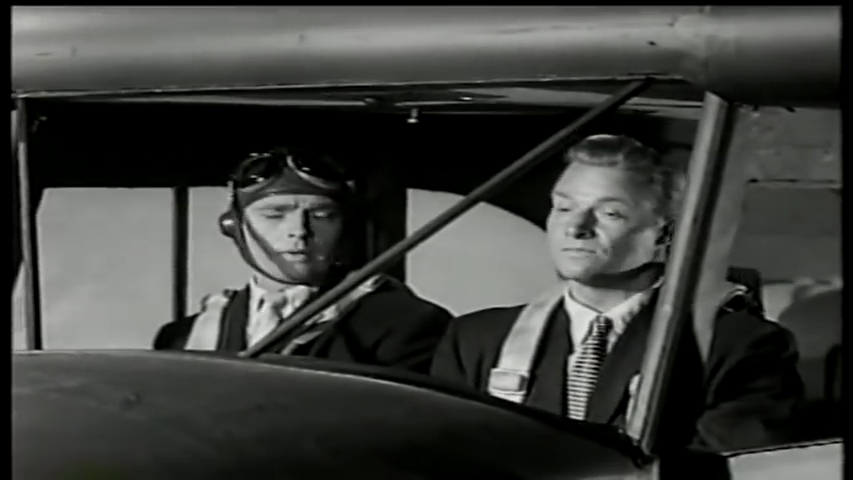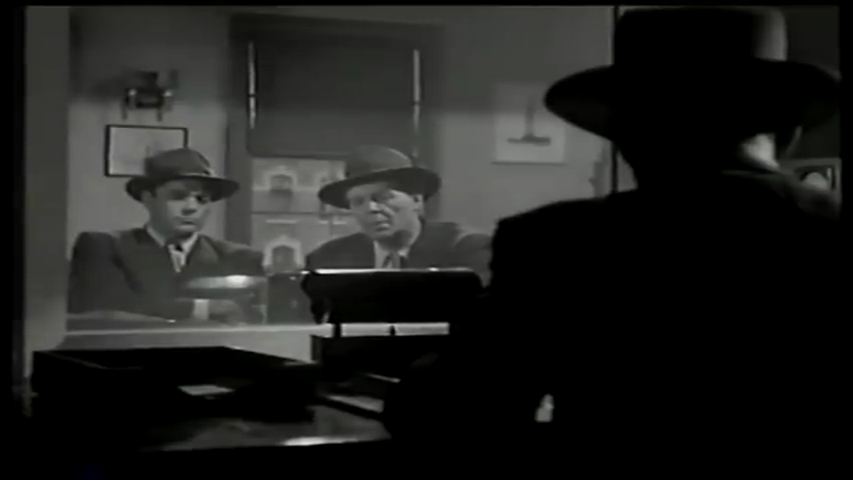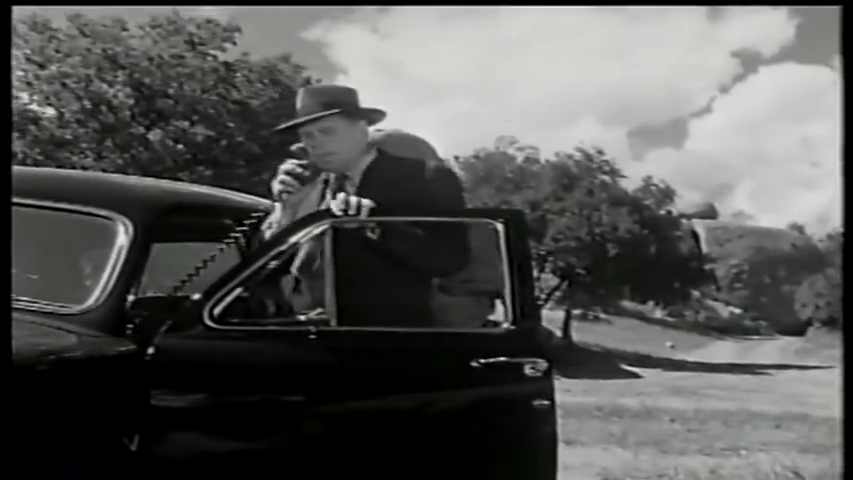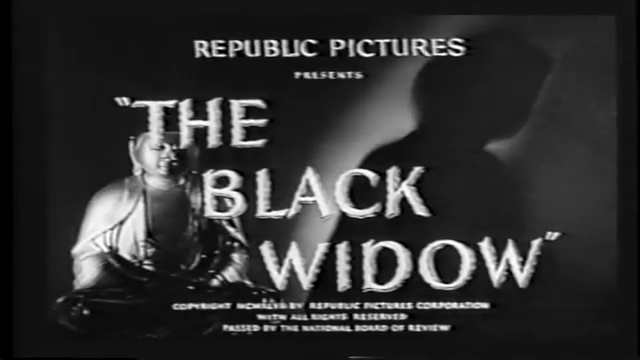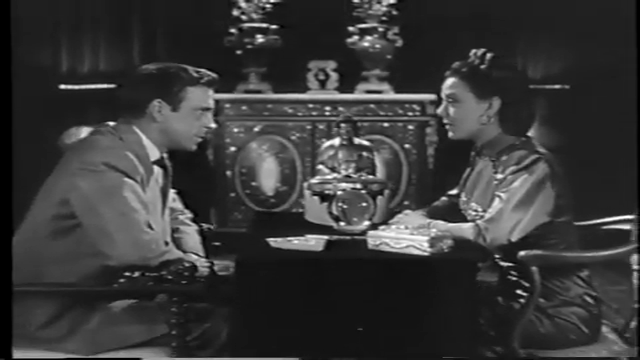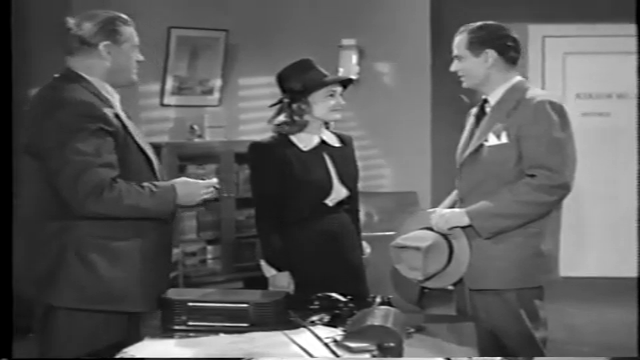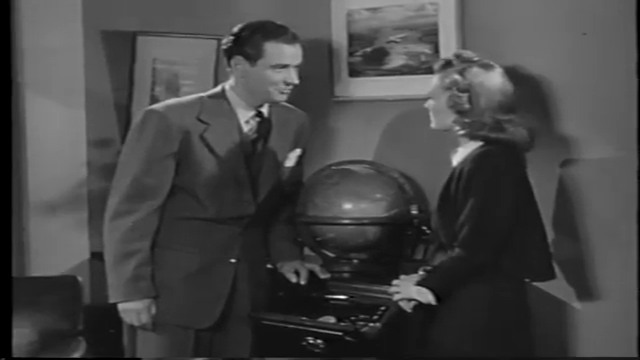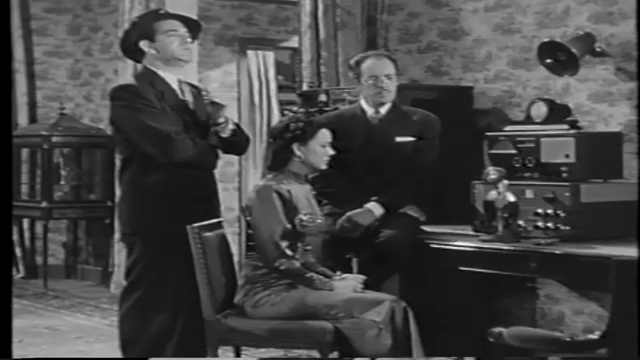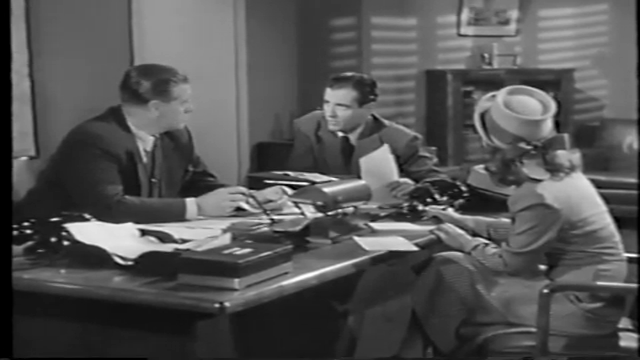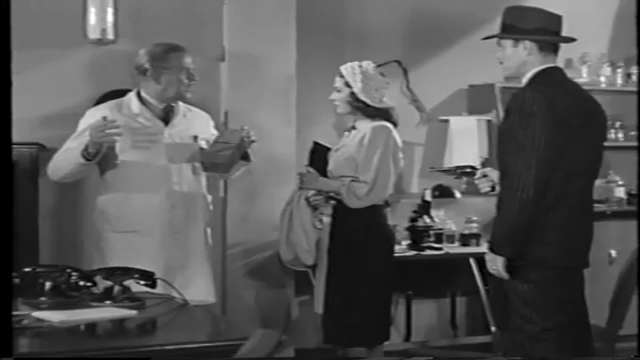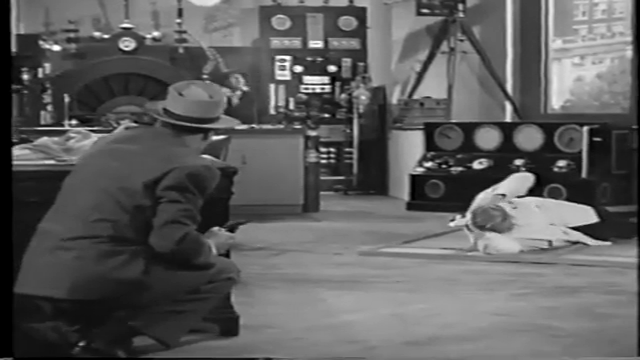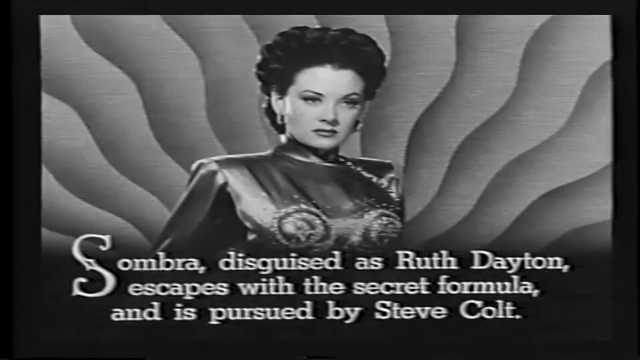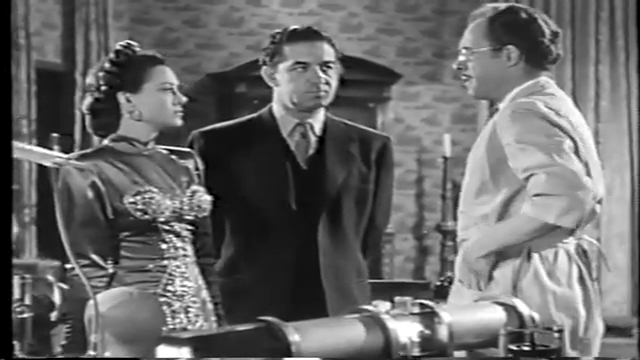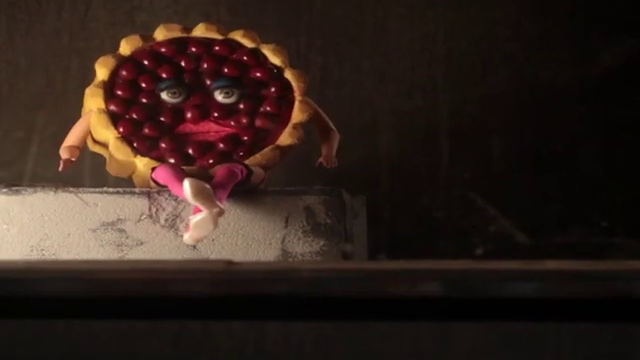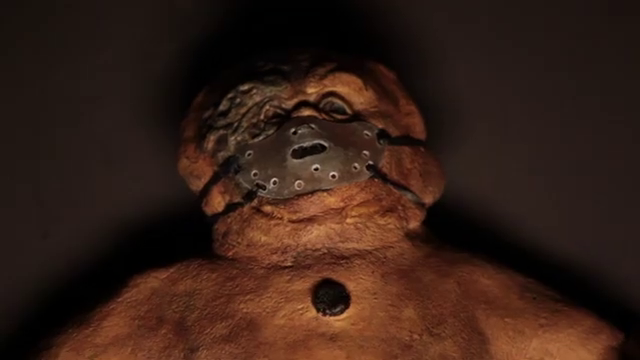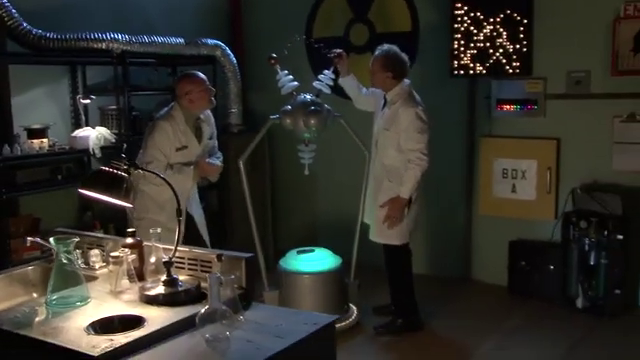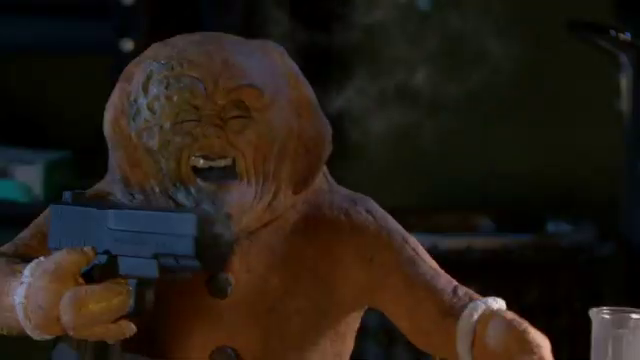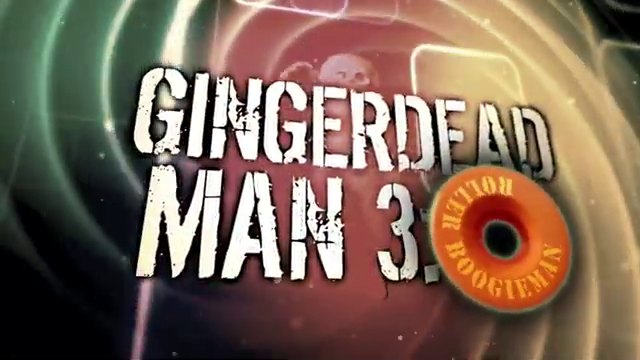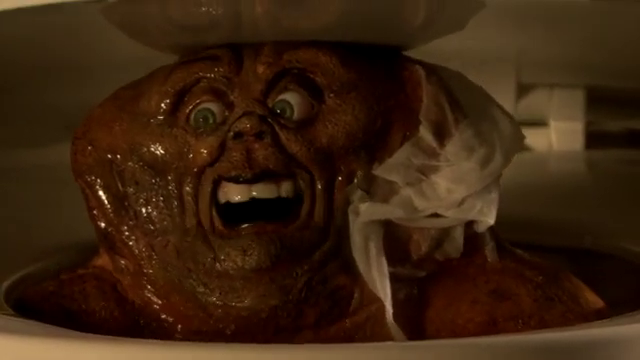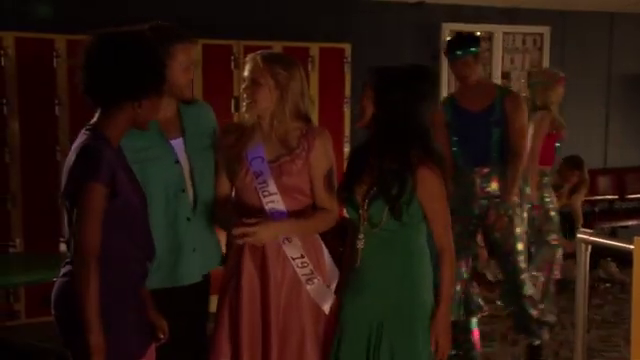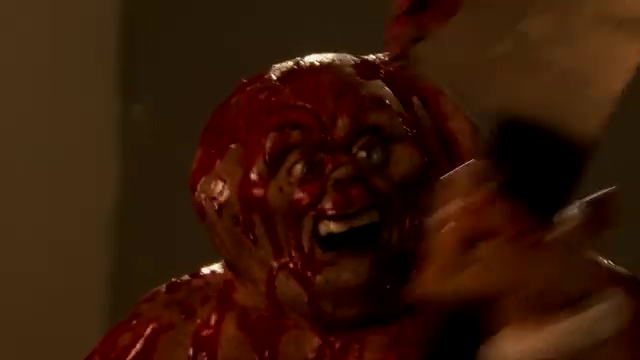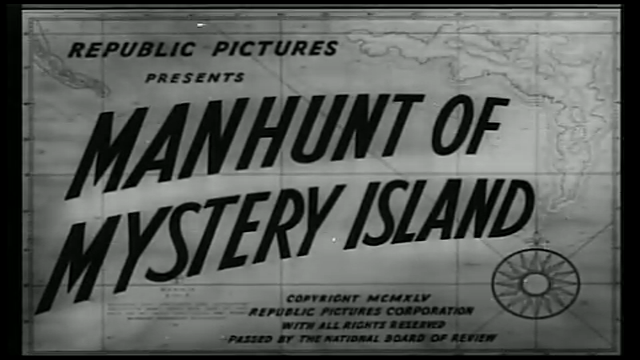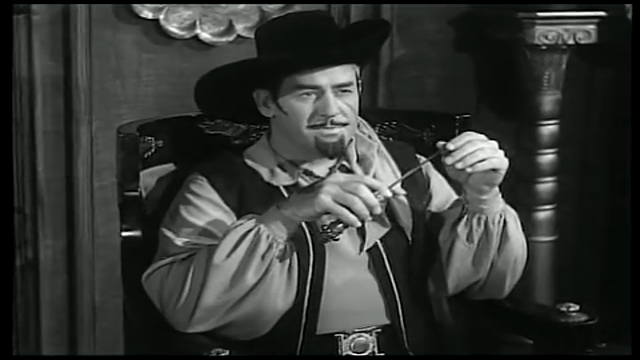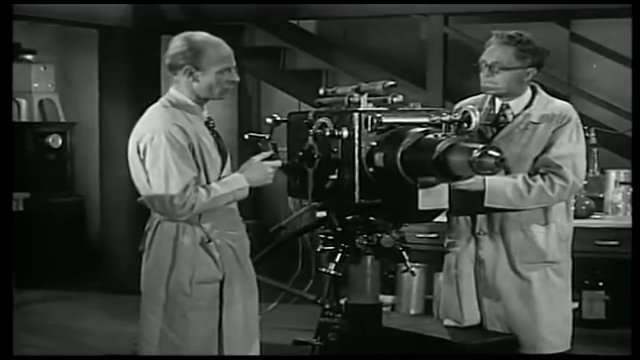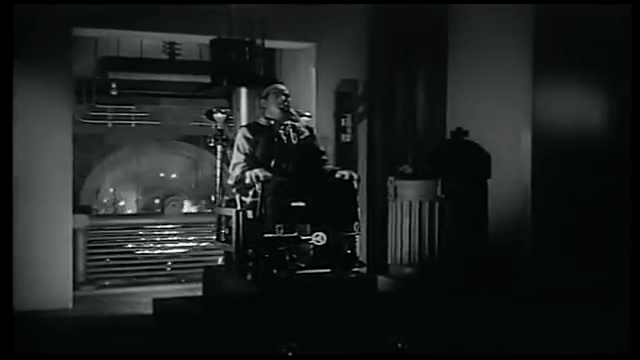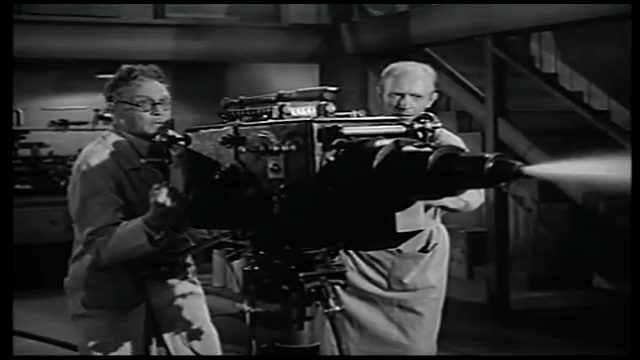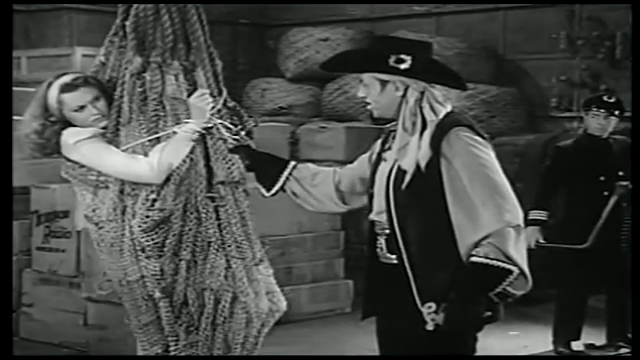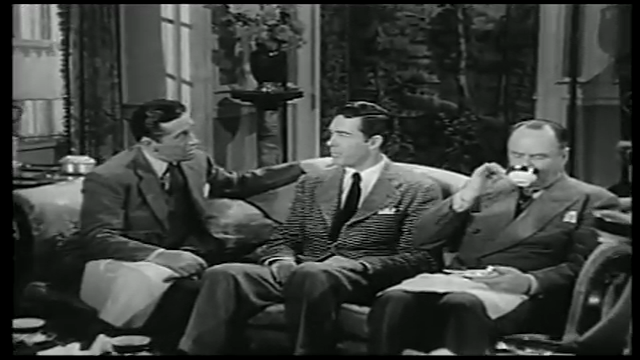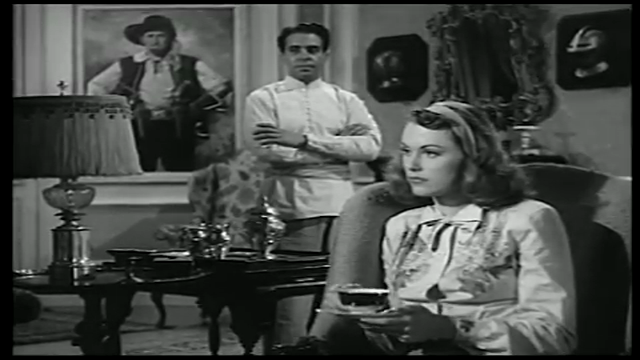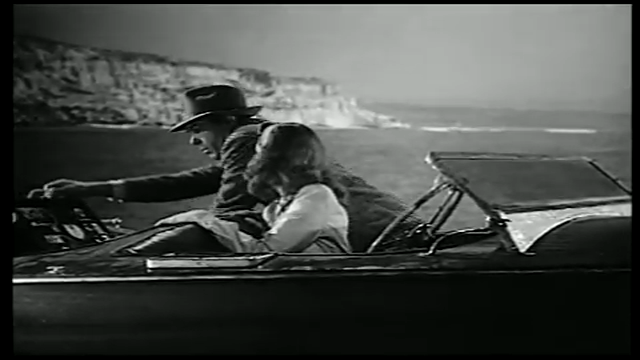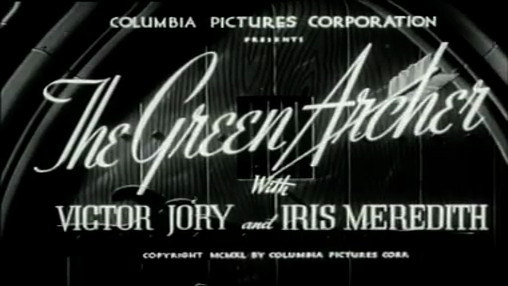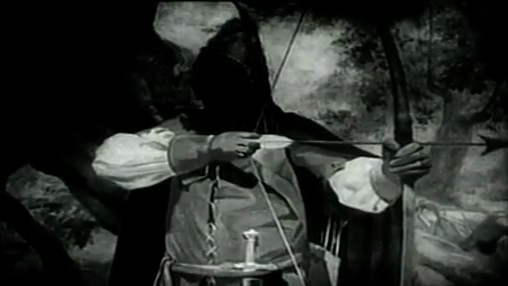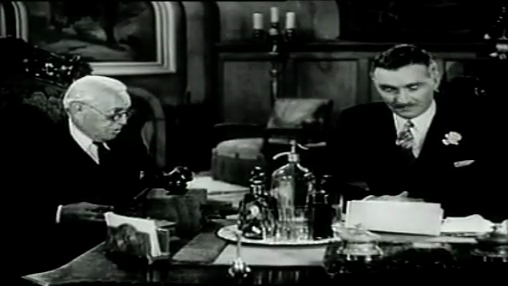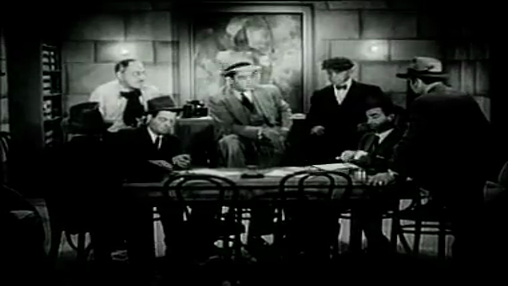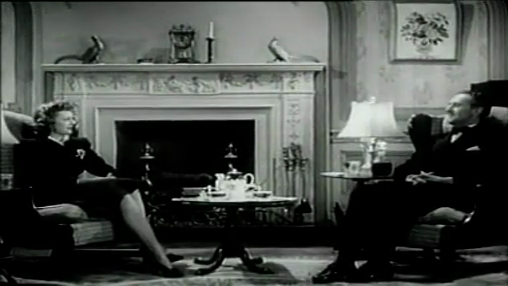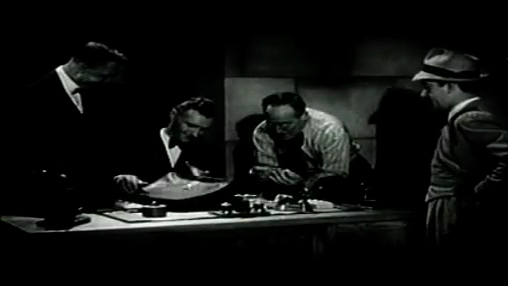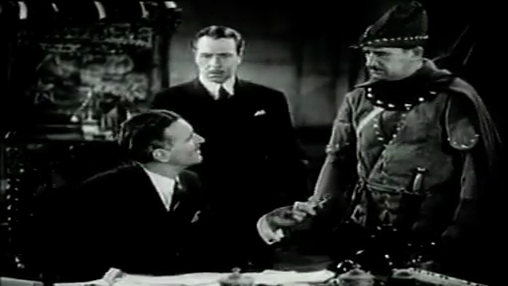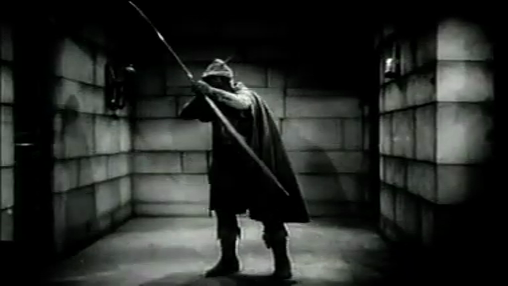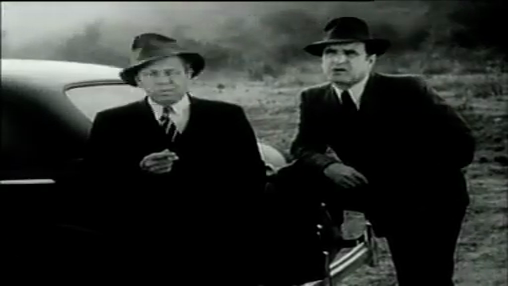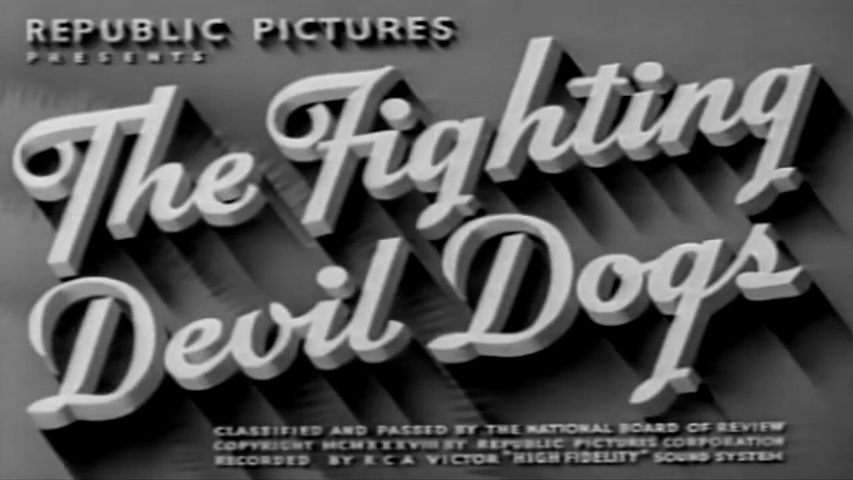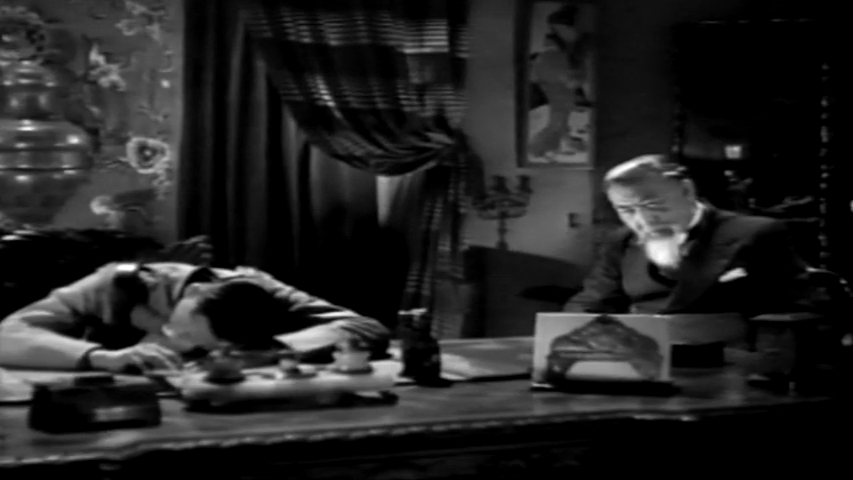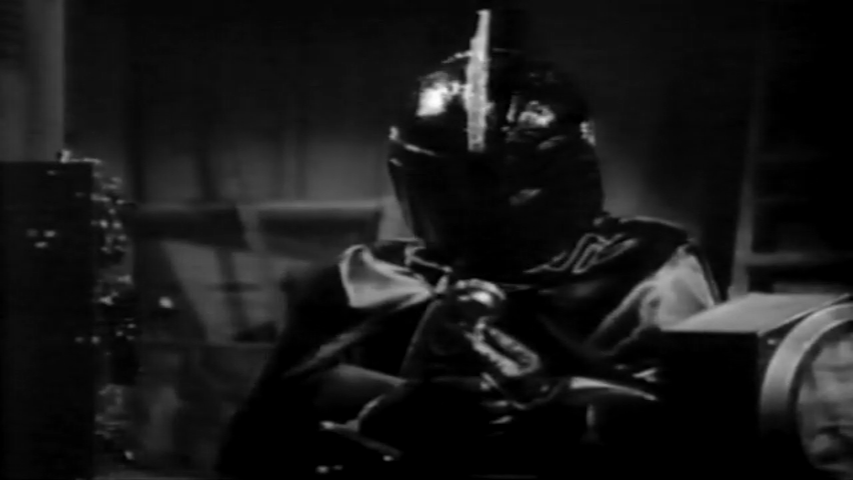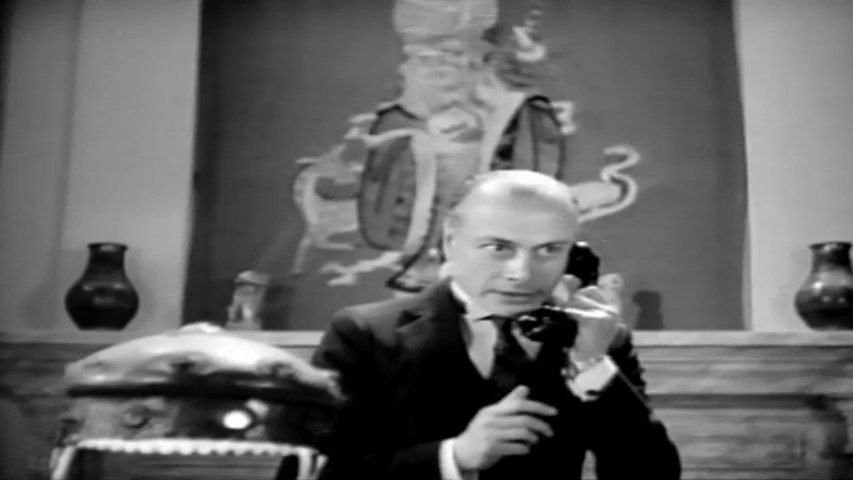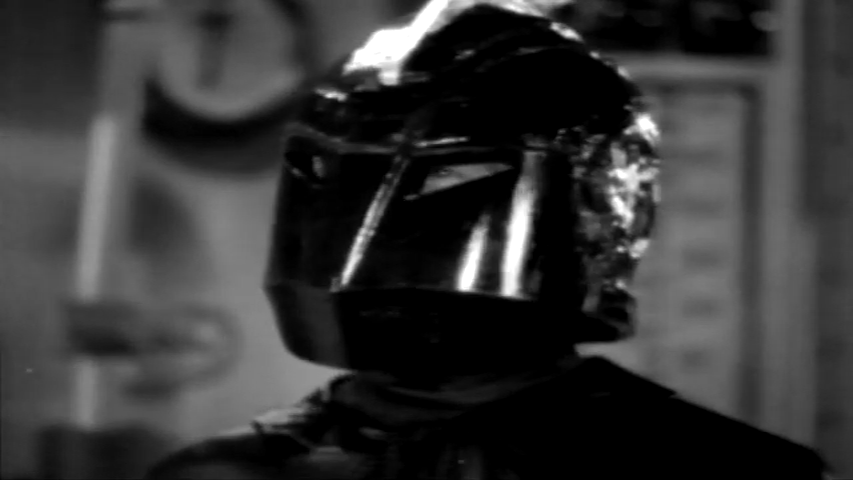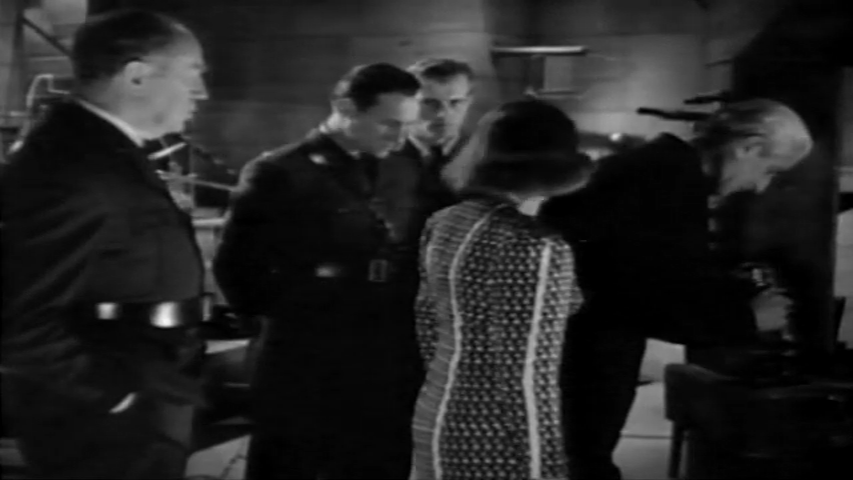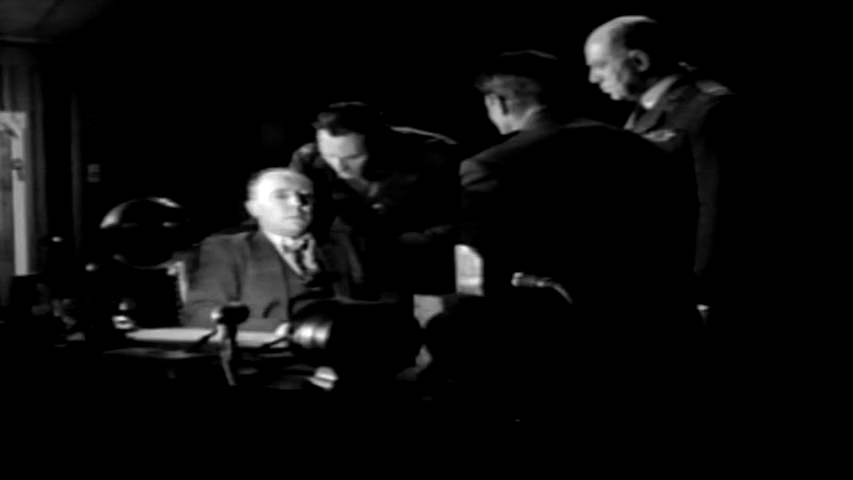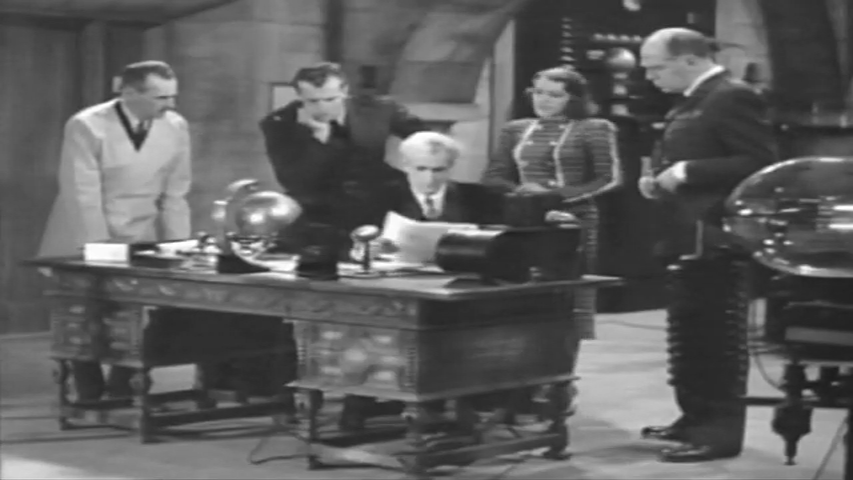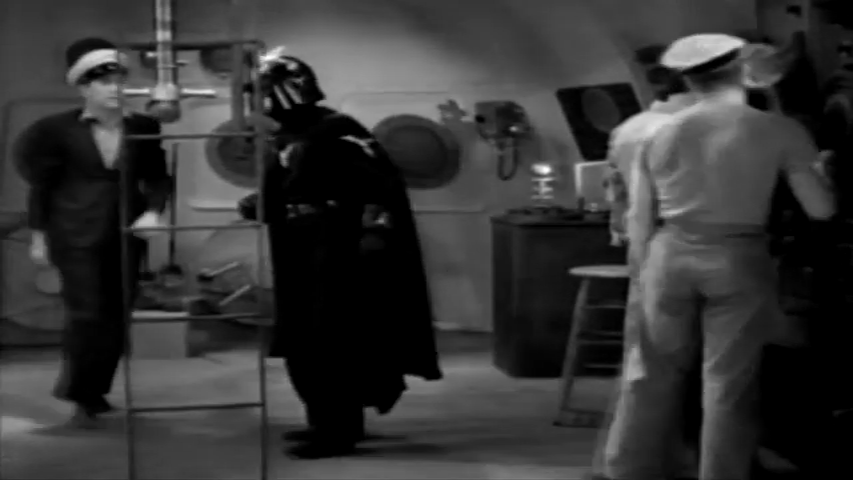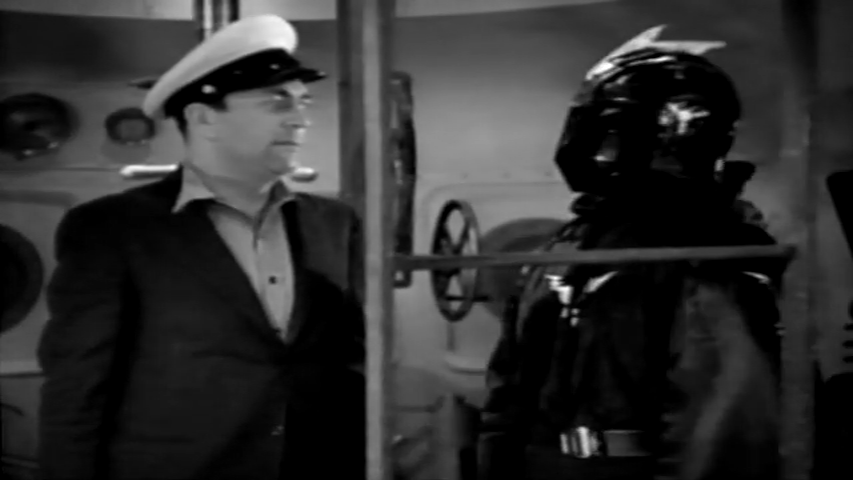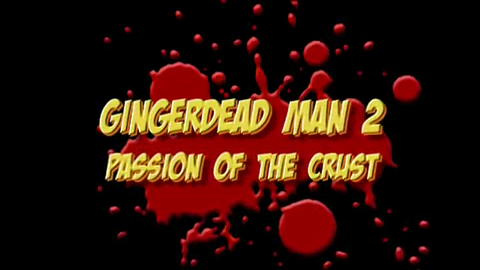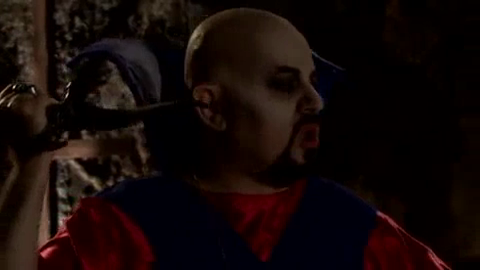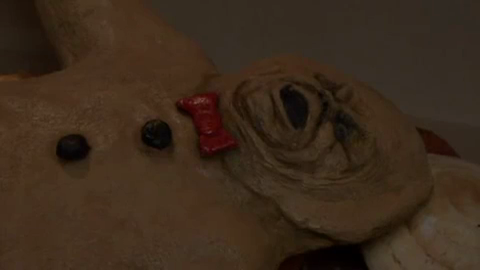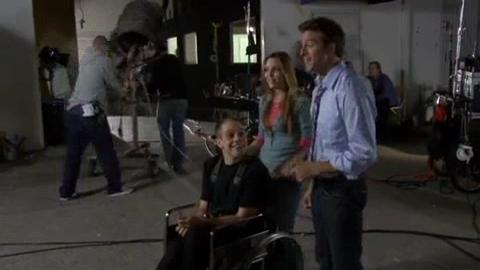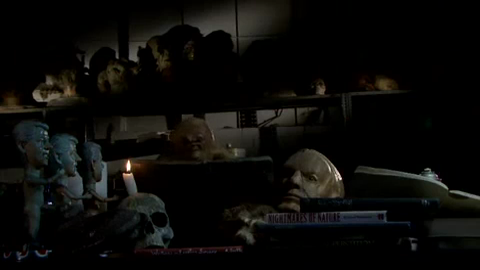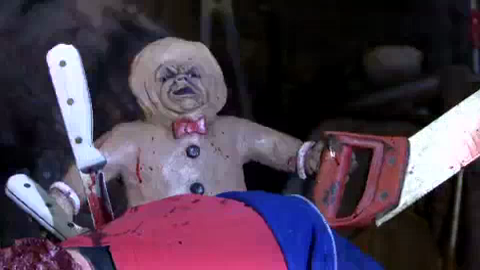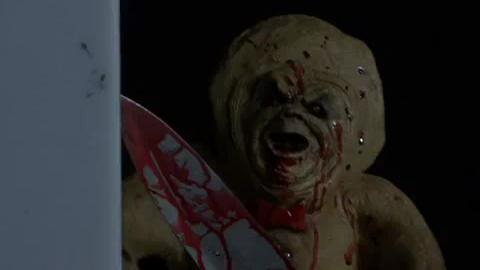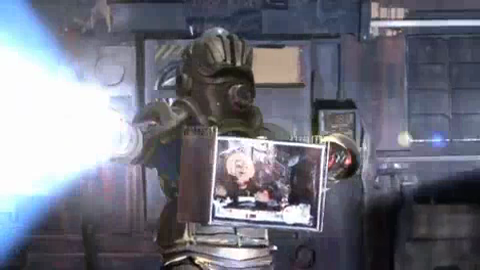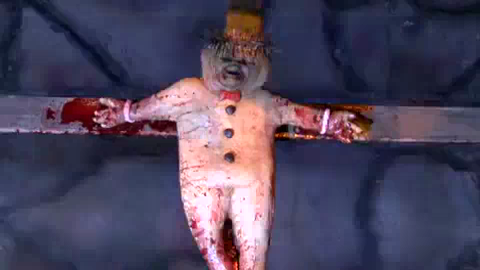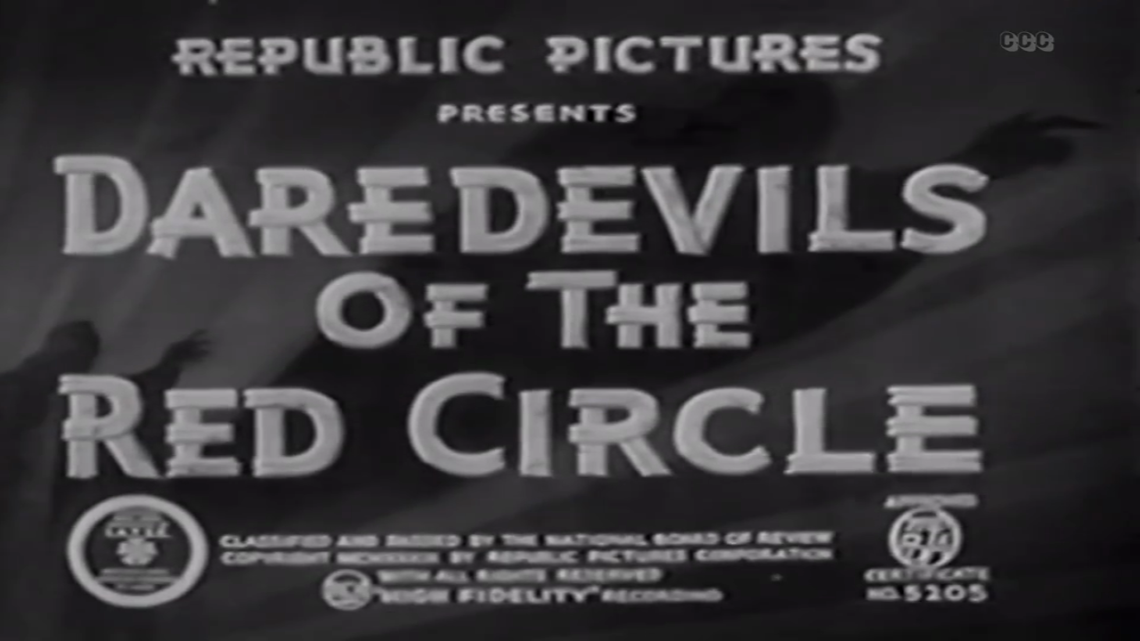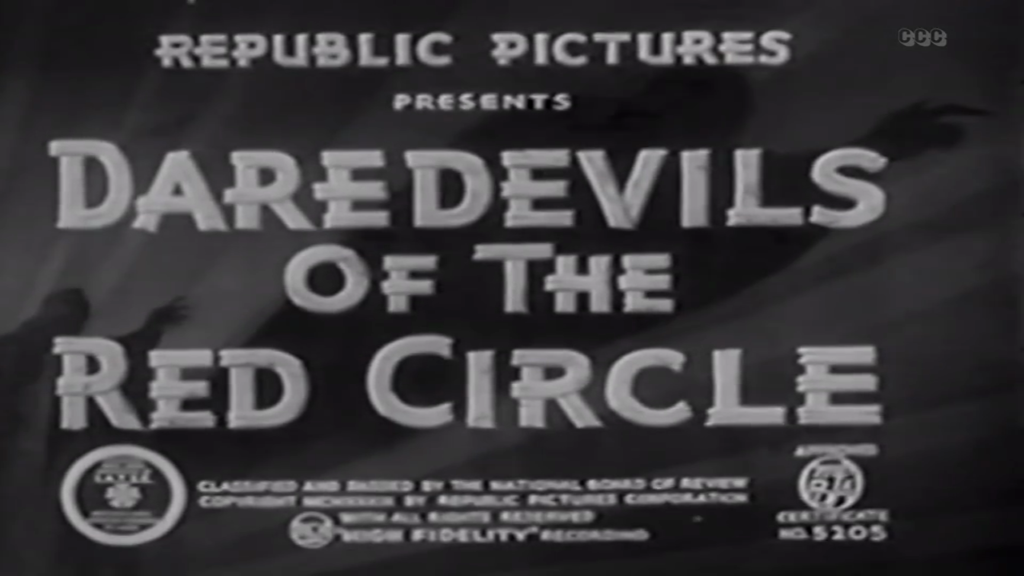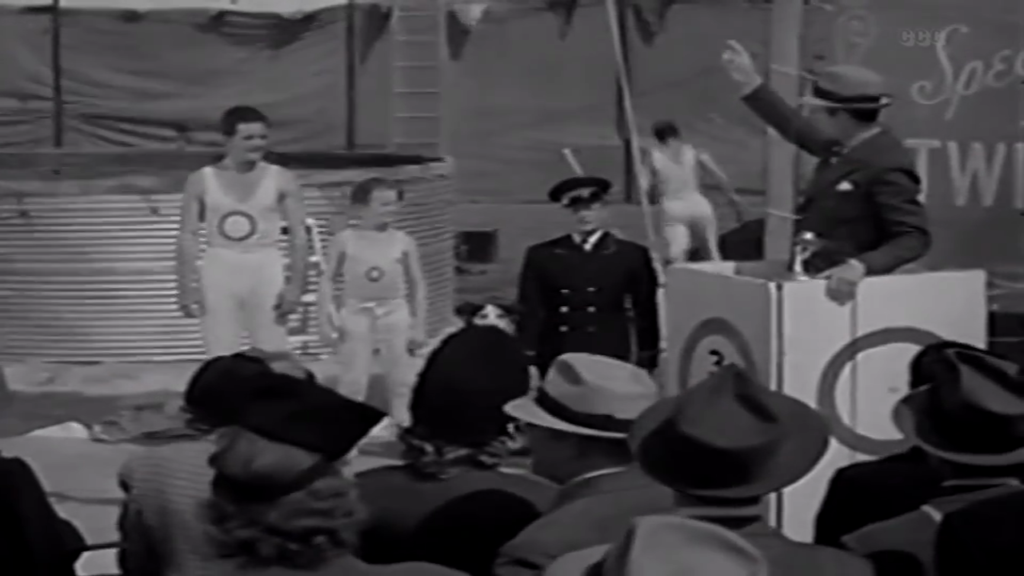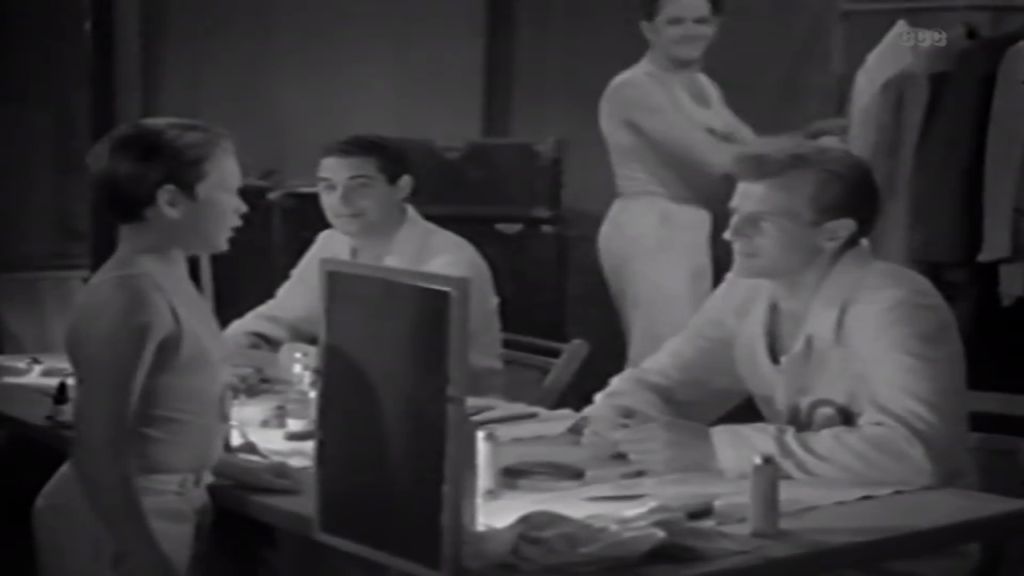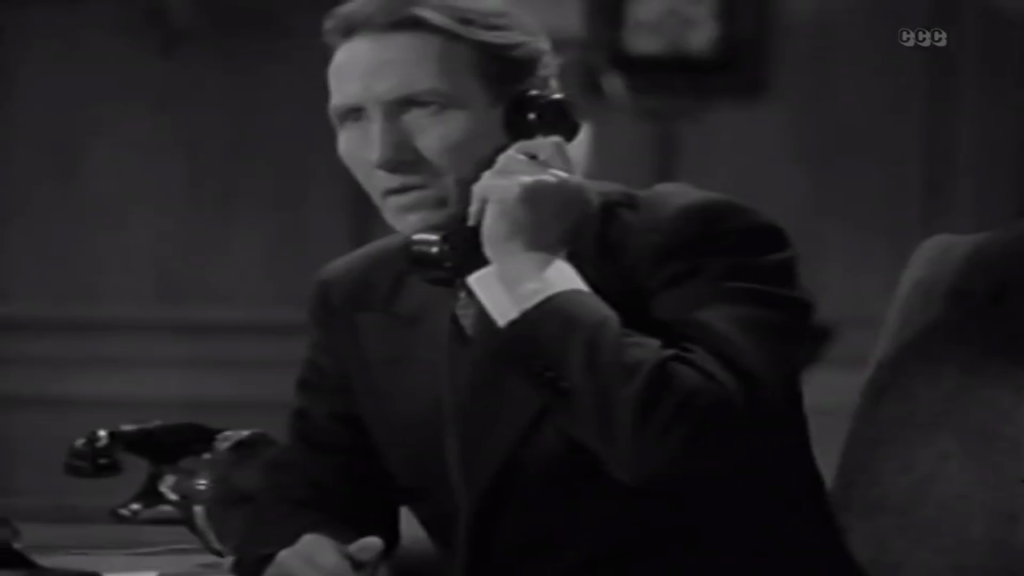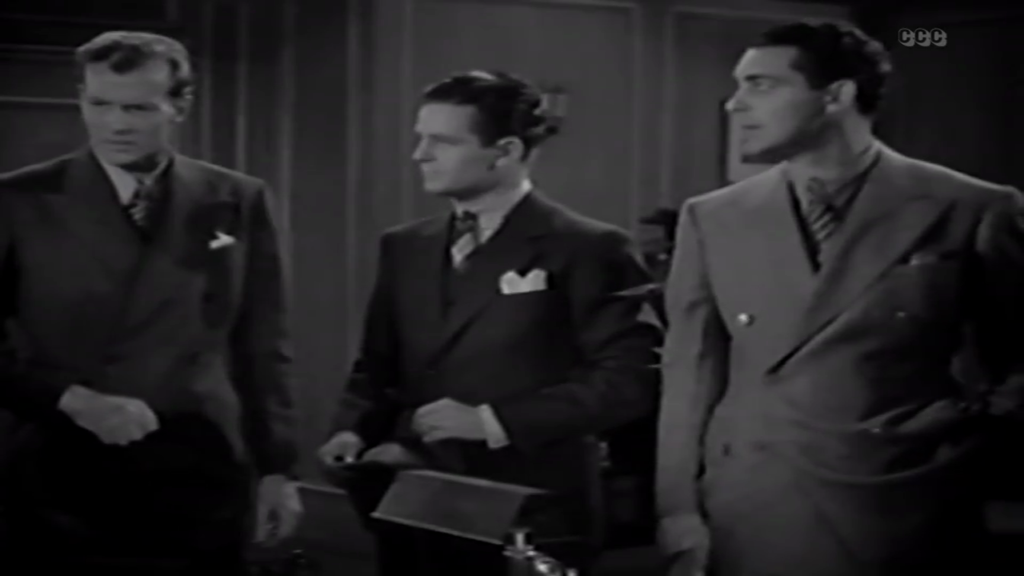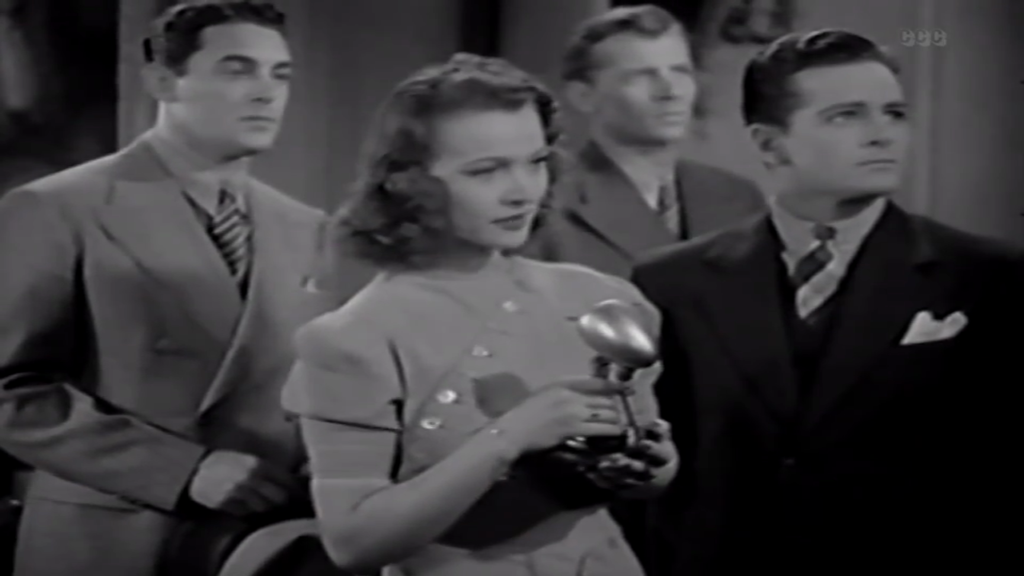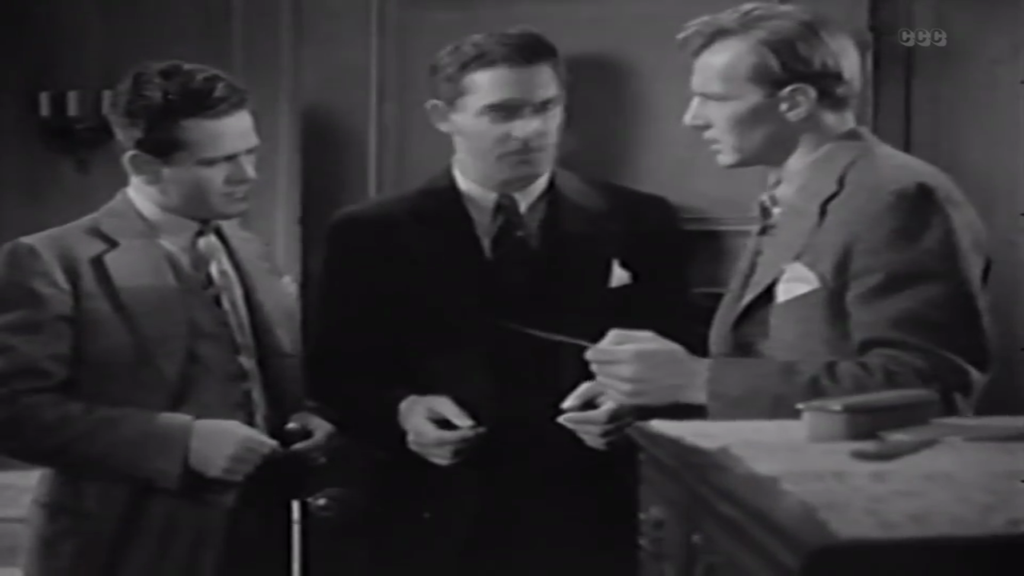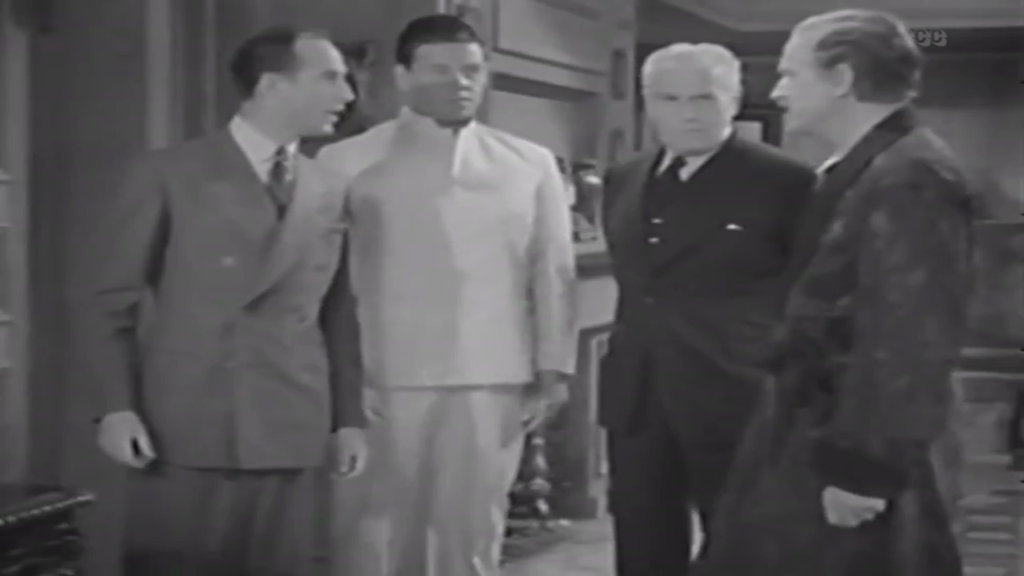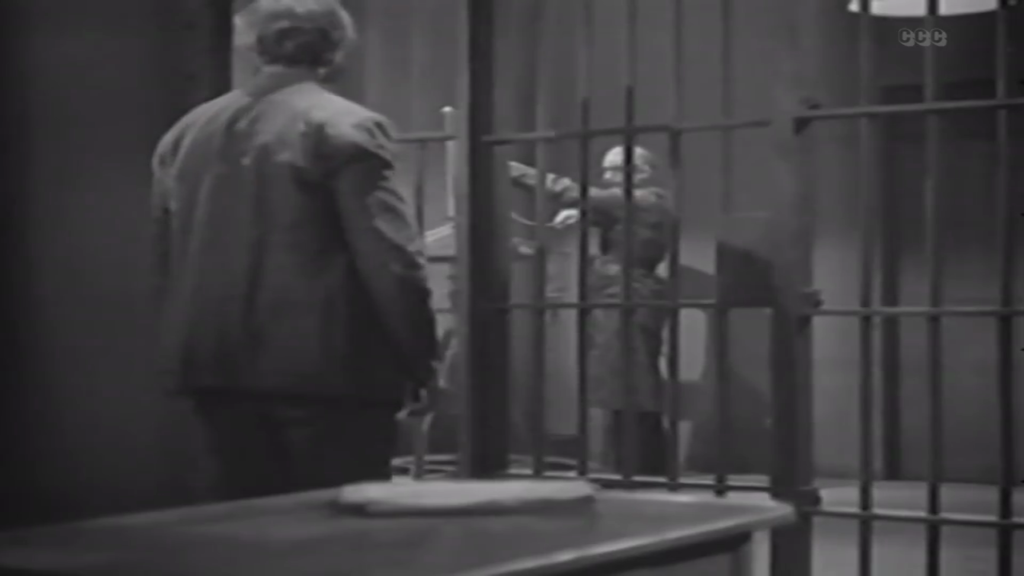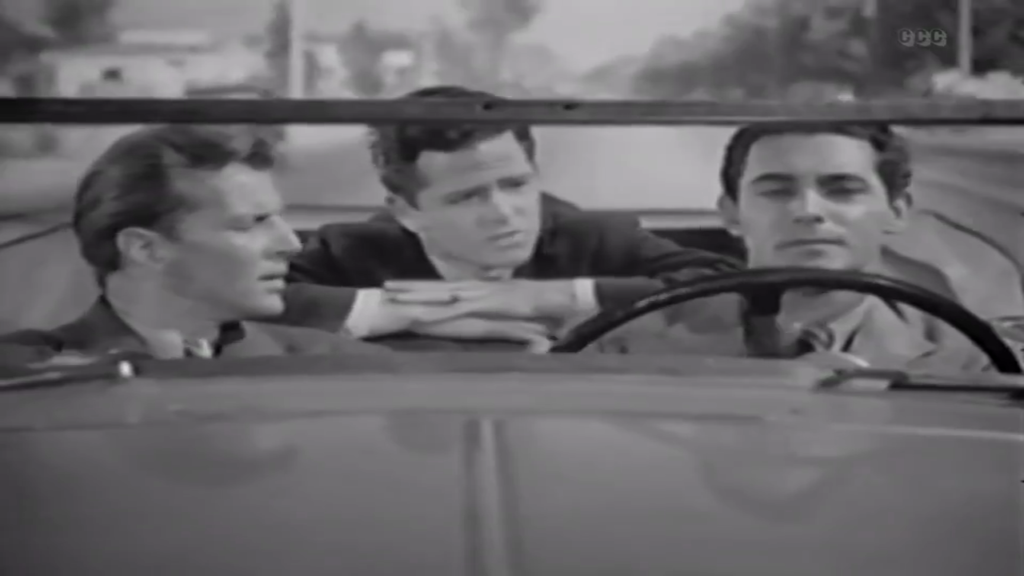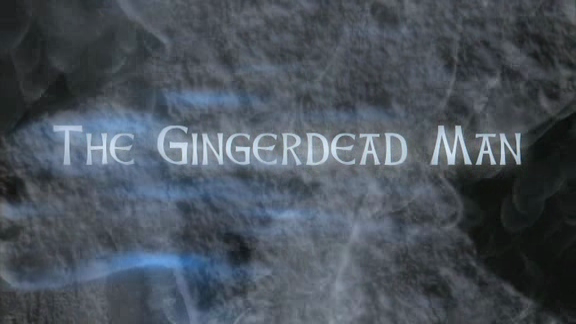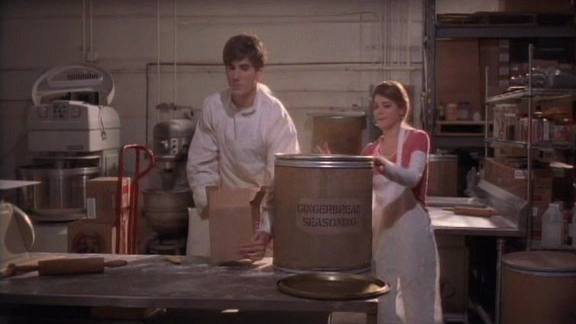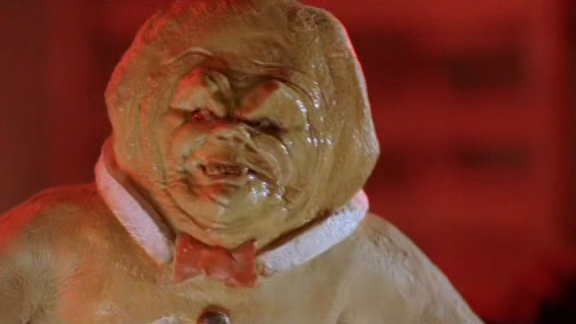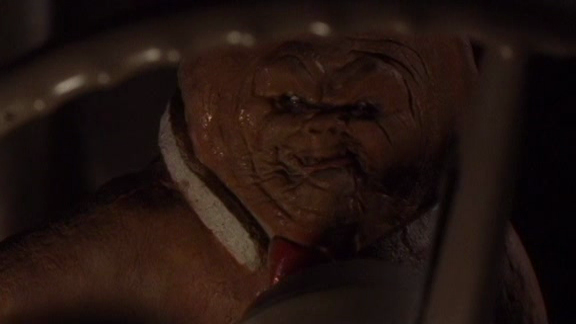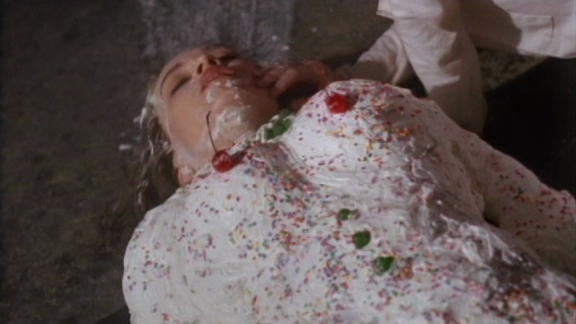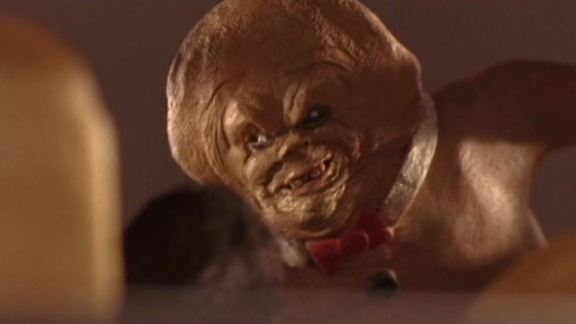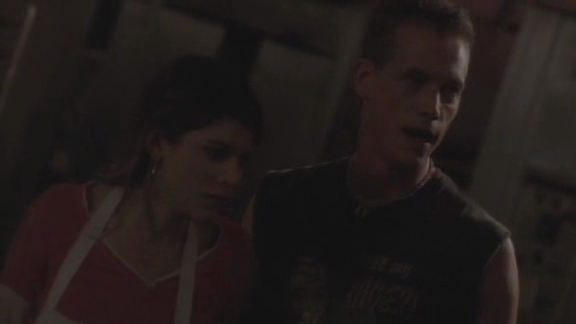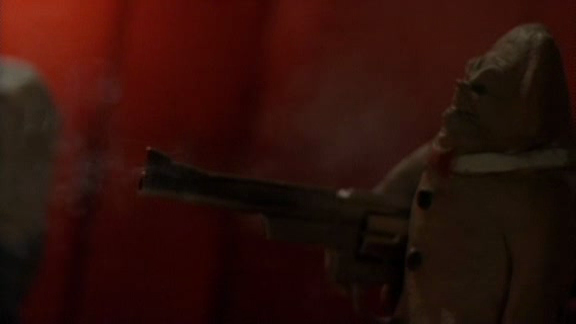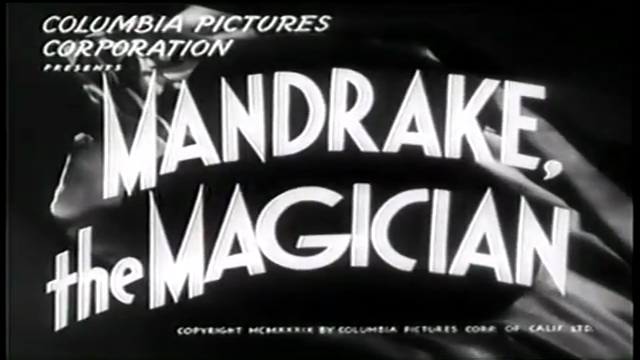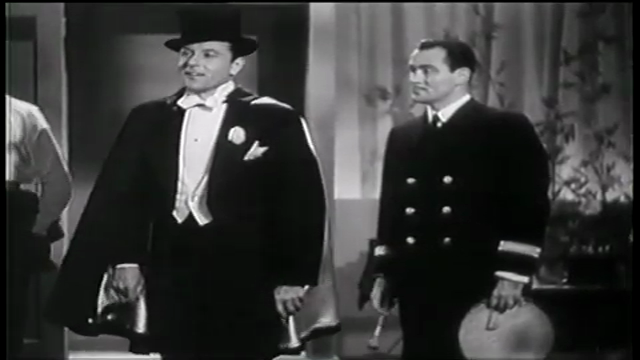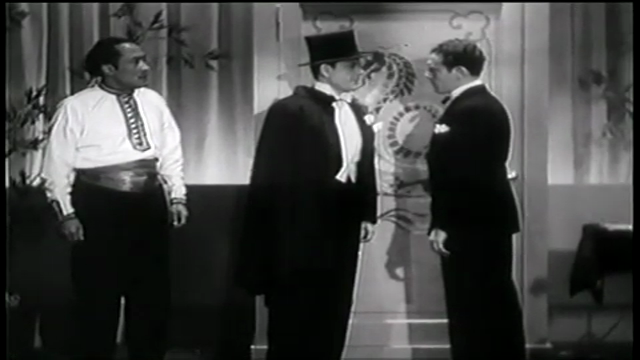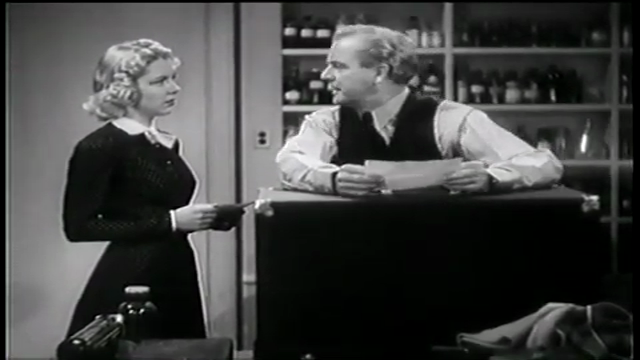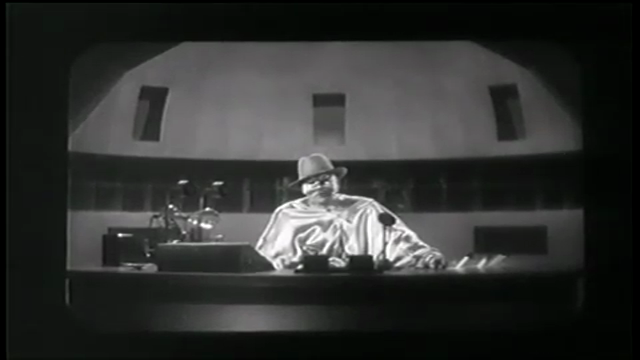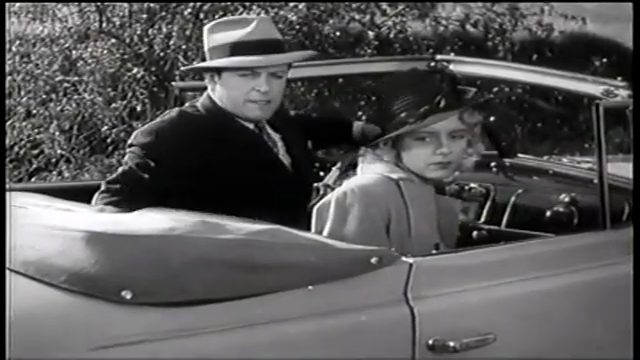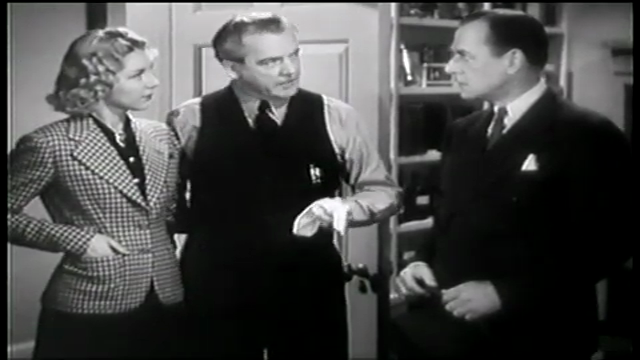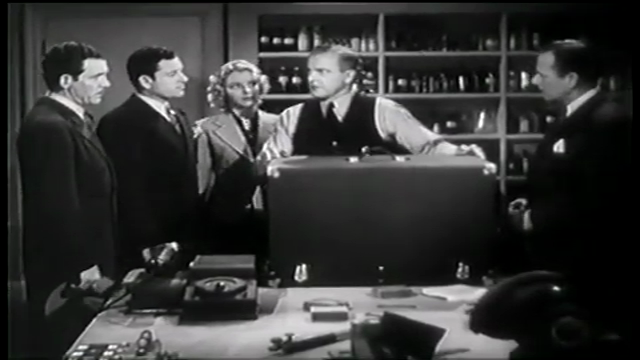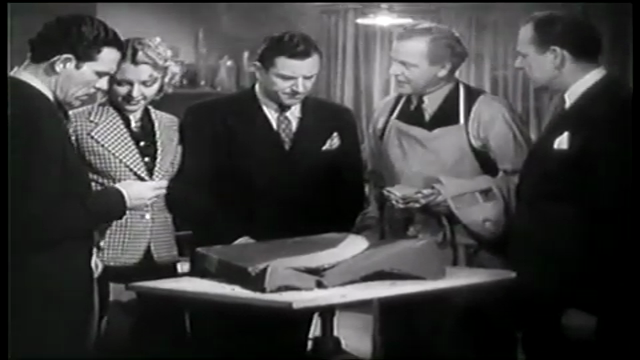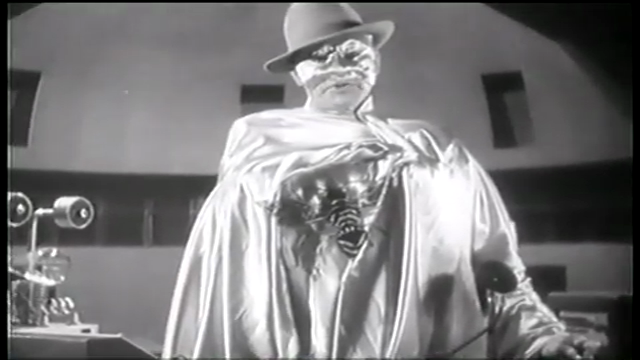-
#450 – Government Agents vs. Phantom Legion (1951)
Government Agents vs. Phantom Legion (1951)
Film review #450
Director: Fred C. Brannon
SYNOPSIS: A company carrying materials by truck to be used for military defense are being hijacked in transit by foreign agents. The company is assigned government agents Hal Duncan and Sam Bradley to put a stop to the criminals. Suspecting that one of the managers of the company is actually the ringleader of these hijackings, the agents must work to dismantle the crime ring and unmask the person responsible…
THOUGHTS/ANALYSIS: Government Agents vs. Phantom Legion is a 1951 serial comprised of twelve chapters. The plot is simple enough: a company which transports materials in trucks is being subjected to a number of hijackings. To resolve the situation, government agents Hal Duncan and Sam Bradley are brought in to bring the perpetrators to justice, as their investigation leads them to suspect that one of the four managers themselves is the ringleader of the gang of criminals. If that plot summary doesn’t sound very interesting, that’s because it’s not. There aren’t any real novel, unique or interesting elements to the story that give it anything to stand out. A plot centering on hijacking trucks just doesn’t compare to the fantastic adventures of Flash Gordon, and the characters of Hal Duncan aren’t particularly memorable or recognisable like Dick Tracy. The serial itself unfolds in typical serial format, with the heroes trying to thwart the villain’s various schemes while getting into brawls and gunfights. There really isn’t anything else to say on the story, because it is so devoid of life or interest that it’s difficult to pay attention while watching.
As mentioned, the lead characters are pretty unremarkable: the serial is not based on an existing comic, book or other media, and so there’s no prior name recognition to get people into the theatre, which is going to hinder this serial further when it already has nothing going for it. The lead characters are bland and uninteresting, and don’t have any notable features. They are aided by the company’s secretary, who of course serves as the only female in the cast doing one of only three jobs that women do in these serials (secretary, journalist, or daughter/niece of another character…which isn’t really a job). The four managers of the company, of which one of them is the criminal ringleader, are equally uninteresting, and given that they are all middle-aged white men with the same moustache, there’s really nothing to tel them apart, and it doesn’t really matter which one of them it is. The mysterious villain isn’t even given a name or identity, and is only seen as silhouette from behind. There’s no real attempt to create a compelling villain, and the mystery of the villain is something that has been done by far too many serials to mention.
The serial is packed with the usual cliffhangers, typically resolved by Hal escaping danger by jumping out of the way at the last second before a car goes over the cliff, a building explodes etc. Nothing special to write about there. The serial was released in 1951, way past the peak of the popularity of the serial format, and all of it’s tropes had been done to death. There’s some decent shots, and the action sequences are choreographed fairly well. Fred C. Brannon, the director, directed many serials before this, so he obviously knows what he is doing, but the story and characters are so lifeless, and the stakes centred about a trucking company leads to there being little to invest in. Overall, Government Agents vs. Phantom Legion is not the best example of the serial format, and well past the peak of the format.
-
#449 – The Black Widow (1947)
The Black Widow (1947)
Film review #449
Directors: Spencer Gordon Bennet, Fred C. Brannon
SYNOPSIS: A series of murders involving poison from a venomous spider leads the editor of the Daily Clarion newspaper to hire amateur criminologist Steve Colt to investigate. He is joined by Joyce Winters to investigate the work of the criminal known only as the “black widow,” who is attempting to steal a prototype rocket project for undoubtedly evil ends…
THOUGHTS/ANALYSIS: The Black Widow is a 1947 serial comprised of thirteen chapters. In the opening, we see a man fall victim to a venomous spider bite, orchestrated by Sombra, a foreign agent disguised as a fortune teller. Adding this man to her killing spree, the Daily Clarion newspaper aims to uncover the secrets of this killing spree by hiring amateur criminologist Steve Colt to unravel the mystery. The story is a very familiar setup, with the basic premise being the protagonist’s having to foil the antagonist’s schemes through car chases, fistfights and the like. It all feels very familiar, and the plot never really progresses beyond this back and forth. A major part of the plot revolves around Sombra trying to get a hold of a prototype rocket project, but it doesn’t really go anywhere or add anything to the story. While almost all of the serials follow the same format and low budget production, the best ones are able to provide something that is reasonably unique to help drive the story and set itself apart from other serials, but The Black Widow doesn’t really have anything; no, an unconvincing plastic spider coming out of a chair to poison it’s victims once or twice doesn’t count.
The characters don’t really help give the serial an original edge. Steve Colt as an “amateur criminologist” is a role that a lot of the serial leads have. It’s a wonder how so many “amateur” criminologists are able to bring down crime bosses with little to no help from the police. Joyce Winters provides the “lead” female role, which is to say she has a small part to play in the serial other than being kidnapped (although she does that too), and it’s good to see more than one female character playing a role in the serial. Sombra as the villain is cold and ruthless, but spends a lot of time just giving orders. Her ability to put on masks and disguise herself as other people seems to be otherworldly, but lacks explanation and justification. Carol Forman, the actress who played Sombra, often played the role of female serial villain, and played a similar character in the 1948 Superman serial, where she played the criminal mastermind the “Spider Lady.” The rest of the character don’t make much of an impact on viewers, and are quickly forgettable. Sombra’s Father, King Hitomu, appears through the use of a device that apparently transports him across the world from presumably east Asia somewhere (although the characters are white they are obviously made up to “look” Japanese, as a lot of serial villains were in response to their role against the U.S. in WWII). Having a transportation device that can take you across half the world instantaneously should probably be more of a deal than the serial makes it out, using it so Hitomu can appear, give his orders, and then disappear again. The plot of the experimental rocket weapon just seems to pale in comparison to such a device. His motivation also just seems to be limited to “conquering the world,” which doesn’t really say anything about his character.
Released in 1947, the serial was released after the peak of the format’s popularity, and the continually recycled tropes had mostly run their course as Hollywood was turning away from low budget serials to feature films that could be more experimental and bold in the post-war boom. That said, with directors Spencer Gordon Bennet and Fred C. Brannon attached; two of the veteran serial directors, the action scenes and camerawork are decently co-ordinated. The acting is often pretty rough, and the dialogue unnatural, as these serial s often try and recap past events through dialogue for people that have missed chapters. There’s some inventive setups and scenery, with hidden switches, and imaginative devices that the villains use to implement their schemes. Overall, The Black Widow benefits from the experience of it’s production staff, but fails to come up with an original story or interesting characters to justify going through all thirteen chapters.
-
#447 – Gingerdead Man 3: Saturday Night Cleaver
Gingerdead Man 3: Saturday Night Cleaver (2011)
Film review #447
Director: William Butler
SYNOPSIS: The Gingerdead Man has been locked up in an asylum, but he is inadvertently freed by animal rights activists, and steals a time travelling device, ending up in 1976. Winding up at a roller disco, the Gingerdead Man decides to engage in yet another killing spree, while the roller derby itself has it’s own problems in the form of imminent closure, the announcement of the roller derby queen, and the niece of the owner finding her love for roller disco to the horror of her aunt…
THOUGHTS/ANALYSIS: Gingerdead Man 3: Saturday Night Cleaver is a 2011 film and the sequel to Gingerdead Man 2: Passion of the Crust. The film starts off at the Scientific Institute for the Study of Homicidal Baked Goods, where FBI agent Clarissa Darling is visiting the Gingerdead Man, intending to secretly kill him for possessing the soul of her brother, who was killed in the last film. In case you couldn’t tell, this opening is a parody of Silence of the Lambs (Clarrisa Darling/Claire Starling). Before Clarrisa can exact her revenge, a group of animal right’s activists storm the lab in an attempt to free the captives, mistaking the evil pastries for animas that have been experimented on (in particular, thinking the Gingerdead Man is a chimp of some sort with his tail chopped off). The Gingerdead Man makes his escape and stumbles upon a time travel experiment conveniently underway down the corridor, murdering the scientist’s and stealing a remote that allows the Gingerdead Man to travel back in time. This opening is…decent, I suppose. A Silence of the Lambs parody is hardly original and ground-breaking content, but it augments it with some creative designs of the other imprisoned pastries and some humour from the animal rights activists in their mistaken identities. It is also abundantly clear that the emphasis is on comedy rather than horror, so viewers in search of gore will be found.
The Gingerdead Man winds up in 1976; at a roller disco specifically. Even more specifically, it is the last night of the roller disco before it is closed down. The story centres around the patrons and staff of the disco, in particular the owner’s niece who is forbidden from skating finding a love for it and also love for one of the workers there. It’s a pretty typical story that parodies films like Grease and Saturday Night Fever (hence the subtitle), but the satire never really has any impact, and lacks the originality to stand out in it’s own right. That said, the story is consistent, well-paced, and plays out across the cast of characters fairly evenly, so that everyone contributes something, making their personalities stand out a bit. The Gingerdead Man goes on his murdering spree in the background of these events, until the big reveal, which means his antics never feel like the focus of the film until the climax. The same set-up was used in Gingerdead Man 2, but there it felt more messy because the overarching story (of a struggling film director) just wasn’t straightforward enough. The setting of the roller disco has a simple, relatable story, but also a cast of characters that become recognisable, and have a certain weight attached to their butchering by the evil pastry. The film eventually pushes itself towards the ridiculous, when the owner reveals that she no longer skates because the last time she did she caused Pearl Harbour (long story…), and the Gingerdead Man being defeated by bringing the most evil people from the past to stop him, including Hitler of course. So while the story is simple to follow, it lets itself get silly.
Like any other Full Moon Pictures film, the effects and production are minimal, so there’s never anything flashy or remotely convincing about the effects. There’s a mix of practical and CG effects, and it’s good that it doesn’t rely too much on the latter. The Gingerdead man himself is a lot more goofy looking in his design, and definitely seems less threatening (not that pastry is very threatening in the first place I suppose), but the fact that he rarely interacts with other characters (except when he kills them) means there’s no awkward interactions between the puppet and actors. The CG effects on the gore aren’t entirely convincing, but help give an over-the-top feel to the kills, which is where the comedy comes from in part. While the story is set in a roller disco, it is also pretty obvious that almost none of the cast can roller skate and dance. There is one actor that clearly has experience where the rest of them just move around the floor without trying to fall over. The transitioning of scenes often cuts t this one guy showing off some moves, but never anyone else.
Overall, I am inclined to think Gingerdead Man 3 is the best in the series (so far). It is structured soundly in terms of story and pacing, even if the story itself is lacking and the satire lacks bite or originality. The setting is recognisable, its cast has personality, and lets itself embrace the absurdity of the concept of time travelling evil pastry. It’s never going to get beyond a 3/10 in terms of rating, but it delivers something at the very least coherent, watchable, sometimes funny.
-
#446 – Manhunt of Mystery Island (1945)
Manhunt of Mystery Island (1945)
Film review #446
Directors: Spencer Gordon Bennet, Wallace Grissell, Yakima Canutt
SYNOPSIS: When Professor William Forrest, the inventor of a revolutionary new scientific device, is kidnapped, his daughter Claire enlists the help of private detective Lance Reardon to find him. They trace his whereabouts to a private island in the Pacific, co-owned by four individuals. The island is terrorised by Captain Mephisto, a long-dead pirate who is actually one of the owners, who uses a fantastic machine to take the form of his ancestor Mephisto. Lance and Claire have to stop Mephisto from forcing Professor Forrest from finishing his scientific device, which will allow Mephisto to wreak havoc on world industries…
THOUGHTS/ANALYSIS: Manhunt of Mystery Island is a 1945 Republic Pictures serial comprised of fifteen chapters. The serial starts out with Professor William Forrest being kidnapped and forced to finish a new scientific device by the evil Captain Mephisto, who wants to use it to wreak havoc across the world’s industries. Forrest’s daughter Claire enlists the help of private detective Lance Reardon to help find him, leading to them travelling to “Mystery Island” somewhere in the Pacific Ocean. There, they meet the four co-owners of the island, and discover the legends of Captain Mephisto, who used the island as his base some two hundred years ago. When they learn that it is he who has kidnapped the professor, they work on finding his secret base and rescuing the professor. The story has many of the usual set ups that these serials do, and the sheer mix of these tropes, while overbearing at times, at least makes the serial interesting. Each chapter advances the plot in some way and has some sort of consequence for the characters, so it feels at least the story is going somewhere, rather than going around in circles for fifteen chapters, which some of these serials do. There’s chases across land, sea and air, and a decent variety of cliffhangers to keep the excitement going too.
The most unique thing about the serial is the premise of the villain. The identity of Captain Mephisto being one of the four co-owners of mystery island isn’t anything surprising, but his “disguise” is not a disguise at all, but is able to change into the body of Captain Mephisto, who is his ancestor, by using a machine that alters his body. It sounds like something that could have been from the Assassin’s Creed franchise. While this is a unique setup for this serial, it does beg the question why “Mephisto” need Forrest’s device when he has a machine that can literally alter his entire body. Surely he could sell the idea and live perfectly happy for the rest of his life? It certainly seems more revolutionary than the device that he is forcing Professor Forrest to build. If he built it himself, surely he would be smart enough to finish Forrest’s invention himself rather than forcing him to do it? It’s probably best not to think too hard about the plot of these serials. The rest of characters are fairly standard, with the usual male lead and sole female character, Claire, who as usual is the daughter of one of the the characters (women in these serials are usually either related to another character, or work as a secretary or reporter). One thing worth mentioning about her character is that she is a lot more active and involved with the story than other women ins serials, who usually just get kidnapped or hang about at their home in the background. Although there’s some of Claire being kidnapped, she plays a somewhat equal role to Lance, as she accompanies him on many of the dangerous setups, and has to escape many of the same perils. She doesn’t get involved in any of the fist-fighting, but she gets to handle a pistol a fair few times, which again is noteworthy because many of the women in these serials are completely passive and have no effect on events. The minimal number of main cast means that a lot of the action centres around Lance and Claire, giving them much more to do and making them feel more like lively characters.
Being released at the mid-latter end of the serial’s lifespan, it makes use of more advanced special effects and setups than some earlier ones. There’s a lot of re-suing footage, such as Mephisto’s transformation sequence which is the same footage used in every chapter. However, there’s not much stock footage, and the action sequences in boats, cars and airplanes involve the characters, rather than clearly being stock footage from other serials. any of the cliffhangers are fairly creative, although their resolutions are typically anti-climatic, with character just walking away from falling off the side of a cliff without so much as a limp. It’s also pretty funny characters seemingly plunge to their deaths when they are clearly stuffed dummies that flail all over the place. On a side-note, I think this is one of the films George Lucas would have seen as a child, as some of these cliff-hangers are replicated rather faithfully in the Indiana Jones films. In particular, the cliff-hanger to chapter thirteen, which sees Lance and Claire trapped on a suspension bridge and Mephisto cuts the ropes from one side, forcing them to seemingly plunge to their doom, is almost identical to the climax of Indiana Jones and the Temple of Doom. Overall, Manhunt of Mystery Island is a decent serial that, while it’s a mish-mash of many different serial tropes and set-ups, produces a well-flowing story and some unique elements which will keep viewers entertained. Certainly a better than average serial.
-
#445 – The Green Archer (1940)
The Green Archer (1940)
Film review #445
Director: James W. Horne
SYNOPSIS: Garr Castle, home of the Bellamy family, is now owned by Abel Bellamy, after his brother Michael was found guilty of murder. After Abel has Michael killed by attacking the train he was on travelling to prison, Abel uses the mansion as his base of operations for his criminal activities. Spike Holland, an insurance agent and Michael’s friend, works to investigate and bring down Abel’s criminal enterprise, with the help of the sister of Michael’s widow Valerie, her Father, and their butler. They are also aided by “The Green Archer,” the supposed guardian of the Bellamy estate, who fires messages in arrows to warn them of danger…
THOUGHTS/ANALYSIS: The Green Archer is a 1940 serial based on the novel of the same name, and a partial remake of the 1925 silent serial. The serial centres around Garr Castle, an American estate owned by the Bellamy family. Michael Bellamy, the owner of the estate, is framed for murder and on his way to prison when the train he is travelling on is attacked and destroyed, killing him and any others. His brother Abel, who orchestrated the attack, takes over the estate, and turns it into a base for his criminal operations, and kidnapping Michael’s widow. Spike Holland, an insurance investigator and Michael’s friend, seeks revenge for his friend’s death, and prove that Abel was behind it. To complicate matters a man dressed as “The Green Archer,” the supposed guardian of the Bellamy estate, sends Holland messages warning him of plots and danger, whereas one of Bellamy’s men also dresses as the Green Archer, luring Holland into various traps. The plot of the serial is fairly straightforward, as the heroes and villains engage in a back-and-forth of schemes and counter-schemes to outdo one another. The setting of Garr castle where most of the serial takes place sets a stage full of traps and secret passageways that the heroes and villains use, but apart from a few instances, feels rather under-utilised (probably because of budget constraints). The tone of the serial tends towards more comedic than action-based, which is probably the influence of the director, who has done the same on other serials. The cast of incompetent villains who bicker with each other and annoy Abel to no end lead to Abel getting ever more exasperated and desperate, which provides a rare moment of character development, and sets the serial apart from others.
The characters on the protagonist are a standard serial cast: Holland takes the lead in the action scenes and fist fights, accompanied in his investigations by the token female character (although there are two more secondary women in the cast, which is far more than a lot of serials), and her Father, who takes the older, cautious, and advisory role. Most of the interesting characters, as mentioned, are the villains, and a lot of the serial is seen from their perspective. Abel’s villainous schemes end up being undone not merely by Holland, but by his own henchman’s incompetence, which clearly take their toll on him. Again, the comedic bickering between the characters being one of the main focuses of the serial. The Green Archer himself, obviously taking his appearance from the classic conception of Robin Hood, keeps his identity secret until the very end, but I think it’s pretty obvious who it is.
At a length of fifteen chapters, the serial is at the longer limit of the format. Chapters twelve through fourteen are a self-contained story concerning Abel attempting to locate and steal a “synthetic radium formula.” Given that it is self-contained, it means that these chapters could be removed and the serial sold as a twelve-chapter serial to theatres that wanted it slightly shorter. The setting of Garr Castle is lavishly adorned and furnished, but given that it is the only setting for the serial it doesn’t offer much variety. The Green Archer does some things a bit differently, but doesn’t offer anything interesting plot-wise, and the increasingly absurd schemes leave it very much lacking in believability. It’s not the worst serial there is, but is lacking in momentum in terms of the plot being just a bit of a family feud and some minor crimes thrown in.
-
#443 – The Fighting Devil Dogs (1938)
The Fighting Devi Dogs (1938)
Film review #443
Directors: William Witney, John English
SYNOPSIS: An American army unit stationed in Singapore is attacked by a lightning-based weapon that all but wipes them out. The two survivors, lieutenants Tom Grayson and Frank Corby learn that a masked villain known only as “The Lightning” is behind the attack, and is using a range of lightning-based weaponry to terrorise the world. Vowing revenge, Grayson and Corby seek out The Lightning and to put a stop to his villainous schemes once and for all…
THOUGHTS/ANALYSIS: The Fighting Devil Dogs is a 1938 Republic Pictures serial comprised of twelve chapters. The serial opens up with an American army unit on patrol in Singapore, where they stumble upon an outpost within which another unit has been wiped out. When their own unit is attacked by a strange lightning-based weapon, the only two survivors, lieutenants Tom Grayson and Frank Corby swear revenge by going after the perpetrator, a criminal who calls himself “The Lightning,” who is terrorising the world with his lightning-based weaponry. The serial revolves around Grayson and Corby, along with their friends, attempting to stop The Lightning’s various schemes, alongside trying to track him down, and exposing his identity as they believe him to be one of his inner circle. Nothing very new here. The story does move at an even pace, and is decently structured, with different settings and action sequences to keep things interesting. As always, there’s not too much to comment on in terms of serial plots, as they always revolve around the same two or three tropes. One notable aspect of the serial is that there is a lot of footage re-used from other serials. For example, the Lightning’s “Flying Wing” aircraft that resembles a modern stealth bomber is the exact same one that is seen in the 1937 Dick Tracy serial. There are no new shots of it, and viewers would undoubtedly remember it if they had seen the popular Dick Tracy serial. In a time where you could only watch these serials at the theatre, maybe people would have been less likely to remember what they had seen in previous serials, or maybe they wanted to capitalise on the popularity of the Dick Tracy serial. The real reason for the stock footage re-use is obviously to save money, but there’s certainly worse footage they could have re-used from worse serials.
The cast of characters is all very familiar and predictable to serial watchers: Grayson and Corby are the young male heroes who do the action sequences and get into plenty of fistfights. The supporting case consists of the usual sole female character, and a cast of minor characters of whom are all suspects for the real identity of “The Lightning.” On the villain himself, he is quite a cool character, with his black outfit, slick helmet, and a lightning gun to shoot people with. The one thing that undoes his image is his nasally, cartoon-ish voice that makes him sound like Skeletor from He-man. A common observation is that “The Lightning” may have very well been an inspiration for the character of Darth Vader. George Lucas is well known to have been a fan of serial movies in his youth, and there’s plenty of aspects of his films that are directly taken from the format, such as the scrolling text openings of Star Wars (and their episodic format), and the general style of Indiana Jones, including his outfit which is almost identical to a character in the Jack Armstrong serial. With this in mind, I think it’s more than a coincidence that “The Lightning” inspired a villain dressed in a black suit, cloak and helmet, who fires lightning from his hands. Also now that I think about it, the “Star Destroyer” ships in Star Wars have the same triangular ship as the “Flying Wing” in this serial…
William Witney, one of the directors of this serial, has stated that this is one of the worst serials that he ever worked on. From the director’s standpoint, I can completely understand why: the sheer amount of stock footage means that the director wouldn’t have to do much, in particular, direct the more exciting scenes which are taken from previous serials. There’s also the fact that there are two flashback chapters which just re-run footage of previous chapters, meaning even less need for a director. It’s no surprise that the serial was only one of three that Republic Pictures made that came in under budget. Another thing holding the serial back is that some of the acting is pretty bad, especially from the two male leads, who often sound like they’ve just barely memorised their lines. Other than the director’s misgivings, I would not classify The Fight Devil Dogs as one of the worst serials. It has some problems in it’s constant re-using of footage, and it’s poor acting, but the plot is fairly even and easy enough to follow, and the villain has a pretty cool design, making it watchable and mildly entertaining.
-
#443 – Gingerdead Man 2; Passion of the Crust (2008)
Gingerdead Man 2: Passion of the Crust (2008)
Film review #443
Director: Silvia St. Croix
SYNOPSIS: At the production of another cheap horror movie, the production team are dealing a myriad of problems that only get worse when the Gingerdead Man turns up in a box of pastry and goes about slaughtering the staff in order to enact and ancient spell to return hi to human form…
THOUGHTS/ANALYSIS: Gingerdead Man 2: Passion of the Crust is a 2008 comedy horror film and the sequel to the 2006 film The Gingerdead Man. The film centres around a low-budget film production studio, where their are problems abound with it’s latest production, and director Kelvin Cheatum is trying to keep everything together on set. They are visited by Tommy and his carer Heather from the “End of the Rainbow Last Wish Foundation” (obvious parody of the make-a-wish foundation) in order to fulfil Tommy’s dying wish of seeing where his favourite movies are made. Polly Bonderhoof attempts to bring some peace to the set with a box of freshly baked pastries from her sister, but unfortunately one of those pastries is the Gingerdead man himself, who stumbles upon a spell book that contains a spell to transmigrate his soul into a human body, requiring the blood of six victims to perform it. With this in mind, The Gingerdead Man starts off on another killing spree to accomplish his goal. The film starts off by recapping the events of the first film, but none of the original cast are in this sequel or even mentioned apart from The Gingerdead Man, so it seems pretty pointless to recap those events…unless, of course, it’s to pad out the runtime, which I’m pretty certain is what is happening. Most of the film doesn’t even feature The Gingerdead Man at all, but rather focuses on the other characters who aren’t really that interesting. It’s only in the last act that he becomes the focus of some attention, whereas for the rest of the film he is skulking around in the background talking to himself, and the kills are not a point of interest, which is pretty essential for a slasher flick.
The characters apart from the Gingerdead Man aren’t all that interesting, although they do have some development and a few twists along the way. You can’t help but feel you’re not really interested in them though in comparison to what the Gingerdead Man is doing. It’s never explained how the Gingerdead Man returned after the first one, but since none of the other characters or plot points return, it’s not an issue that is lingered upon.
Being set in a movie studio, I think it’s pretty obvious that this is used as cover to use film equipment and sets as part of the film itself to make it cheaper to produce. Some of the puppets are decently designed and animated, and the sets are at least fairly full of props and scenery to make it look somewhat genuine. One of the big problems is that a lot of the Gingerdead Man’s scenes and the subsequent gore are shot close up (so you obviously can’t see the wires or puppetry), and as such, you don’t really get a sense of action and movement from these shots. The film also makes a habit of having long scenes of dialogue that dissipates any sense of pacing or tension. I think the film is also a bit of a self-commentary on the production company Full Moon Pictures, which itself makes low-budget horror films, but whether this is something average film goers will appreciate is debatable. The film ends with the Gingerdead Man being crucified by the other puppets, which I guess fulfils the subtitle of the movie, but is the only thing that does. Overall, Gingerdead Man 2: Passion of the Crust suffers from the problems of its predecessor, but has a more interesting setting and story that ties up all the characters. It doesn’t pretend to be anything other than a low-budget slasher comedy, so you get what you would expect, but with a bit more polish than its predecessor.
-
#442 – Daredevils of the Red Circle
Daredevils of the Red Circle (1939)
Film review #442
Directors: William Witney, John English
SYNOPSIS: Three daredevils are performing their regular circus act when sabotage leads to a huge fire breaking out, and the death of the young brother of one of the performers leads to them wanting to seek revenge. They learn that a former prisoner is responsible, and is attempting to destroy the properties of Granville, the man which put him away. The daredevils team up with Granville, but little do they know that the Granville they are working with is actually prisoner “39013″, who has assumed Granville’s identity and kept the real one locked up in his basement as a means to exact his revenge. The daredevils must work together to stop 39013 and unravel the mystery, aided by a mysterious ally known as the “Red circle,” who communicates with them only through notes in order to alert them of 39013′s plans and to keep their identity a secret…
THOUGHTS/ANALYSIS: Daredevils of the Red Circle is a 1939 serial film comprised of twelve chapters. The serial opens up with the daredevils Gene, Tiny and Burt performing their show at a circus owned by millionaire philanthropist Horace Granville. Meanwhile, ex-prisoner and former business partner of Granville Harry Crowel, who now goes by his prisoner number “39013″ (pronounced thirty-nine oh thirteen), plans to get revenge on Granville, who put him in prison. 39013 sabotages the next show of the daredevils, causing the circus to go up in flames and killing Gene’s kid brother. They decide to get revenge by teaming up with Granville to stop 39013, but little do they know the Granville they are working with is actually 39013 himself, disguising himself as Granville, who is actually locked in the basement, and ruining his life from within. The rest of the serial comprises of the Daredevil’s attempts to foil 39013′s various schemes, while being aided by notes left for them by the mysterious “Red Circle.” The story and format are all very familiar to serial goers, with the opening chapter actually showing off the unique aspects of the characters doing their daredevil tricks and stunts, and then in subsequent chapters hardly ever being seen again, with the aim of the expensively produced first chapter being used to draw viewers in and convince them to come back to the theatre week after week to watch subsequent ones. The death of Gene’s young brother Sammy is an unusually dark premise to open on, as the kid character is a staple of many serials that younger viewers may relate to, rather than them being killed off in the first ten minutes. The rest of the serial is a very familiar story though, with each chapter introducing a new plot to destroy another of Granville’s industries or properties, and the daredevil’s attempting to stop the. There’s some decent variety and action sequences, but nothing too memorable amongst the huge amount of times they have been done across the format.
The characters are the usual suspects in this serial, with the three daredevils being the usual young, athletic, ideal Americans who can pull off all the necessary stunts and fistfights that the story demands. They are all defined as having a speciality in particular aspects of daredevilry, but we never see those particular talents define their character beyond the first chapter, and they all feel very similar to one another. Blanche as the granddaughter of Granville plays the typical token female character and as usual has very little to do for the majority of the serial. 39013 is a fairly typical villain, but at least he has a clear motive and purpose. He is played by Charles Middleton, who most famously was the villain Ming the Merciless in the Flash Gordon serials, and later the villain in the Jack Armstrong serial. The man certainly knows how to play a villain. The rest of the characters don’t leave much of an impression, apart from the dog Tuffie, who is obviously well trained. The one seriously problematic character is that of “Snowflake,” a black man who serves as a “servant” in the Granville household. Like nearly every black person in cinema at this time, they are portrayed as simple-minded and clumsy, alongside being the butt of every joke. Obviously this is an extremely racist and problematic representation that films created and perpetuated during this time, and badly dates the serial.
The serial makes use of some decent settings and set-ups for it’s end-of-chapter cliffhangers, such as chapter two’s flooding tunnel in which one of the daredevils has to escape on a motorbike. The effects aren’t convincing by today’s standards, but are decent for the time. The plot ramps up at the end of the tenth chapter, where 39013 is unmasked and flees while the real Granville is rescued, and this makes a change to everything usually being resolved in the last five minutes in other serials. However, it throws away that excitement by using chapter eleven as a “recap” chapter consisting mostly of clips from the previous chapters, which really stops the excitement in its tracks. Overall, Daredevils of the Red Circle has some decent moments and a fair amount of excitement, but a number of problems make it feel very dated and not really worth returning to.
-
#441 – The Gingerdead Man (2005)
The Gingerdead Man (2005)
Film review #441
Director: Charles Band
SYNOPSIS: Following a robbery in which two people are killed, the criminal is executed for his crimes. Sarah, whose Brother and Father were the ones killed while she survived, is working at her family’s bakery when a mysterious delivery arrives. When she bakes a gingerbread man with this delivery, it comes alive with the soul of the robber that killed Sarah’s family, and seeks to finish the job he started…
THOUGHTS/ANALYSIS: The Gingerdead Man is a 2005 comedy horror film. The film starts off with a robbery in progress at a diner (who robs a diner?), where Sarah watches her brother and father get shot and killed by the robber, but before he can kill her, he is stopped, and eventually executed for his crimes. Years later, Sarah is working at her family’s bakery when a mysterious delivery arrives, and when she bakes a gingerbread using this delivery, it comes alive with the soul of the robber who murdered Sarah’s brother and father, and is looking to finish what he started. The film follows a typical format of horror films, with the cast of various personalities attempting to survive the murderous spree of the villain, who picks them off one by one through somewhat creative deaths. Despite the absurd premise of cursed bakery products, the film for the most part plays it straight, and takes the whole scenario seriously. There’s a few silly one-liners and some of the deaths are over-the-top, but other than that it’s a pretty straightforward affair that doesn’t take much advantage of it’s bizarre premise, and the uneven pacing means that there isn’t really enough tension built up to make it interesting. The whole premise of the robber’s soul being transferred into a gingerbread man isn’t explained at all, and while it’s somewhat easy to piece together what happens, the specifics aren’t explored. This isn’t the type of film to worry about the details though.
The characters resemble a fairly typical horror film cast, full of conflicting personalities and drama between them. There’s Sarah Leigh and the other employees of the bakery ‘Brick’ and Julia, and also Lorna Dean, whose father runs a nearby commercial bakery attempting to put the family-run bakery out of business, and her boyfriend Amos Cadbury (nice sweet-related surname there), with whom a love triangle is set up between him, Sarah and Lorna. A lot of the character development is done through scenes of dialogue that really slow the film down, and also don’t really add anything to what’s going on. The Gingerdead Man himself we hardly see enough of, as he appears only nearly half way through the film, and given it only really has a sixty minute runtime, there’s not much exploration of the set-up, or giving the villain opportunity to creatively enact his killing.
The Gingerdead Man is obviously a low budget affair, with the short runtime, the use of a very limited amount of sets, and plenty of scenes consisting of just talking. Gary Busey as the robber/The Gingerdead Man is the only recognisable casting, and is probably where the majority of the budget went (even though he was paid “only” $25,000). The music seems to also to be a bit misplaced; it never seems to fit the scene, or builds up too soon or too late. The Gingerdead Man himself is decently animated and fairly lively, but we only ever see him from close-up shots and never in full view of the camera, probably to hide the strings or whatever puppetry was being used to animate him. Also, the credit sequence consists of the slowest possible crawl of people involved, and runs to over ten minutes in an obvious attempt to increase the runtime, which is ridiculous for such a low budget feature. Overall, The Gingerdead Man does nothing to fill the ridiculous premise that its title promises, and also doesn’t offer much as a parody of horror tropes either. Everything it does the Child’s Play films have done much better, so it has little to offer as a unique film experience.
-
#440 – Mandrake, the Magician (1939)
Mandrake, the Magician (1939)
Film review #440
Directors: Norman Deming, Sam Nelson
SYNOPSIS: The magician Mandrake and his assistant Lothar are performing magic shows on a cruise liner when they make the acquaintance of Professor Houston, who claims to have invented a “Radium energy machine.” When this miraculous invention is stolen by a criminal known only as “The Wasp,” Mandrake must use all of his cunning to recover the machine and defeat the villainous criminal mastermind.
THOUGHTS/ANALYSIS: Mandrake, the Magician is a 1939 movie serial comprised of twelve chapters, and based off the comic strip of the same name. the serial starts out on a cruise ship with Mandrake performing a magic show with his assistant Lothar, when they make the acquaintance of Professor Houston, who has developed a radium energy machine for the good of mankind. When Mandrake visits Professor Houston and his family at his home, he finds that the radium gun has been stolen by a criminal mastermind known only as “The Wasp,” who wants to use it for nefarious purposes. This begins the usual serial plot of attempting to stop the mysterious criminal mastermind and his henchman by foiling their various plots, with car chases, fistfights and explosions along the way. It’s fairly standard stuff for the format, and content I have reviewed plenty of times for the other serials I have reviewed. There’s enough action and variety to be entertaining for the time, but not much to enthral viewers nowadays.
The comic strip character Mandrake was very much a proto-superhero, using illusion, hypnosis and trickery in his masked disguise to thwart villains. This serial adaptation does what most similar adaptations of these characters do, and simply use a recognisable name and strip down anything unique or interesting (or anything too expensive to accomplish) to fit them into the serial format of the All-american hero who solves all his problems with his fists. Mandrake’s “magic is reduced to some cheap novelty tricks which only feature prominently in the first chapter (with the usual purpose of enticing viewers into theatres to watch it and returning for subsequent chapters, despite these subsequent ones lacking the excitement of the first). There’s a scene where the villains tie up Mandrake’s hands, but obviously being a magician, he can easily slip out of them; the villains should probably have thought about that a bit. The rest of the characters are unnoteworthy: Lothar as Mandrake’s assistant is the only non-white person and refers to Mandrake as “Master,” which is a typical portrayal of non-white characters as subservient to the main characters. Professor Houston’s family includes his daughter Betty (as the token female character) and Tommy Houston as the “kid” character the younger viewers can identify with. The Wasp is another serial villain who takes the identity of an animal, and is also secretly one of Mandrake’s allies; a plot point that is only revealed in the last ten minutes or so, and has no real impact on the plot anyway. His disguise is quite distinct, but other than that there’s nothing particularly memorable about him.
As always with these serials, there’s a strict (no) budget to these serials, with nothing too fancy beyond explosions, car chases, and stock footage from anything more extravagant. The sets at least have some effort put into them as well as the radium machine itself looking like an interesting prop. The shots of models being destroyed are, while not convincing by today’s standards, are visually arresting. The cliffhangers employ a variety of situations that put the protagonists in danger, but as always are resolved rather unremarkably. I think Mandrake, the Magician could have been an interesting serial if it would have focused on the “magic” angle a bit more, and offered some different action and heroics to set it apart from other serials. As it is though, it follows the typical formula of using the name of a popular character and taking out all their unique features to fit the pre-established serial format to allow for quick production and release. There’s nothing overly bad about it, but it is unremarkable in the plethora of these stories in the serial format.
